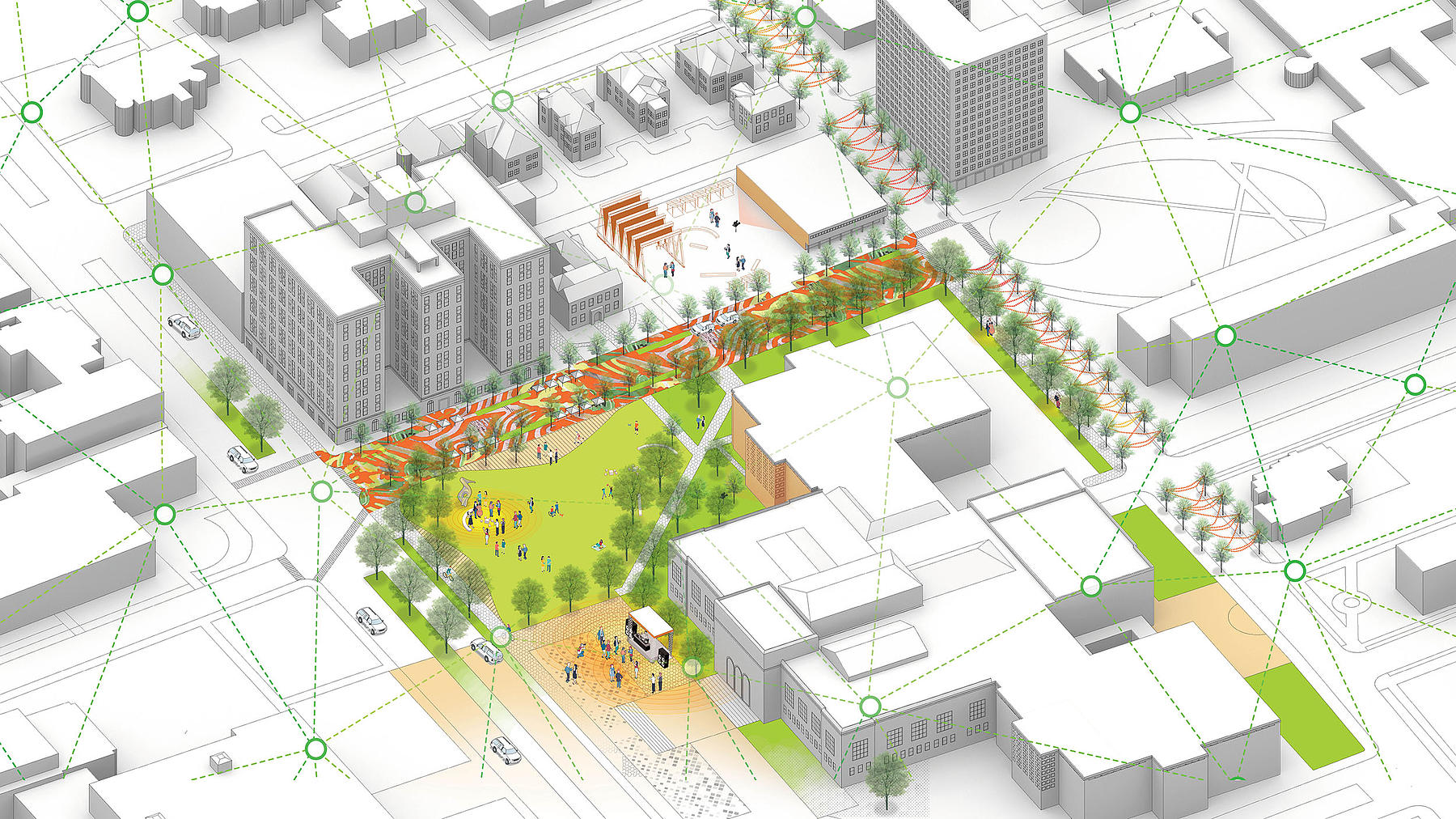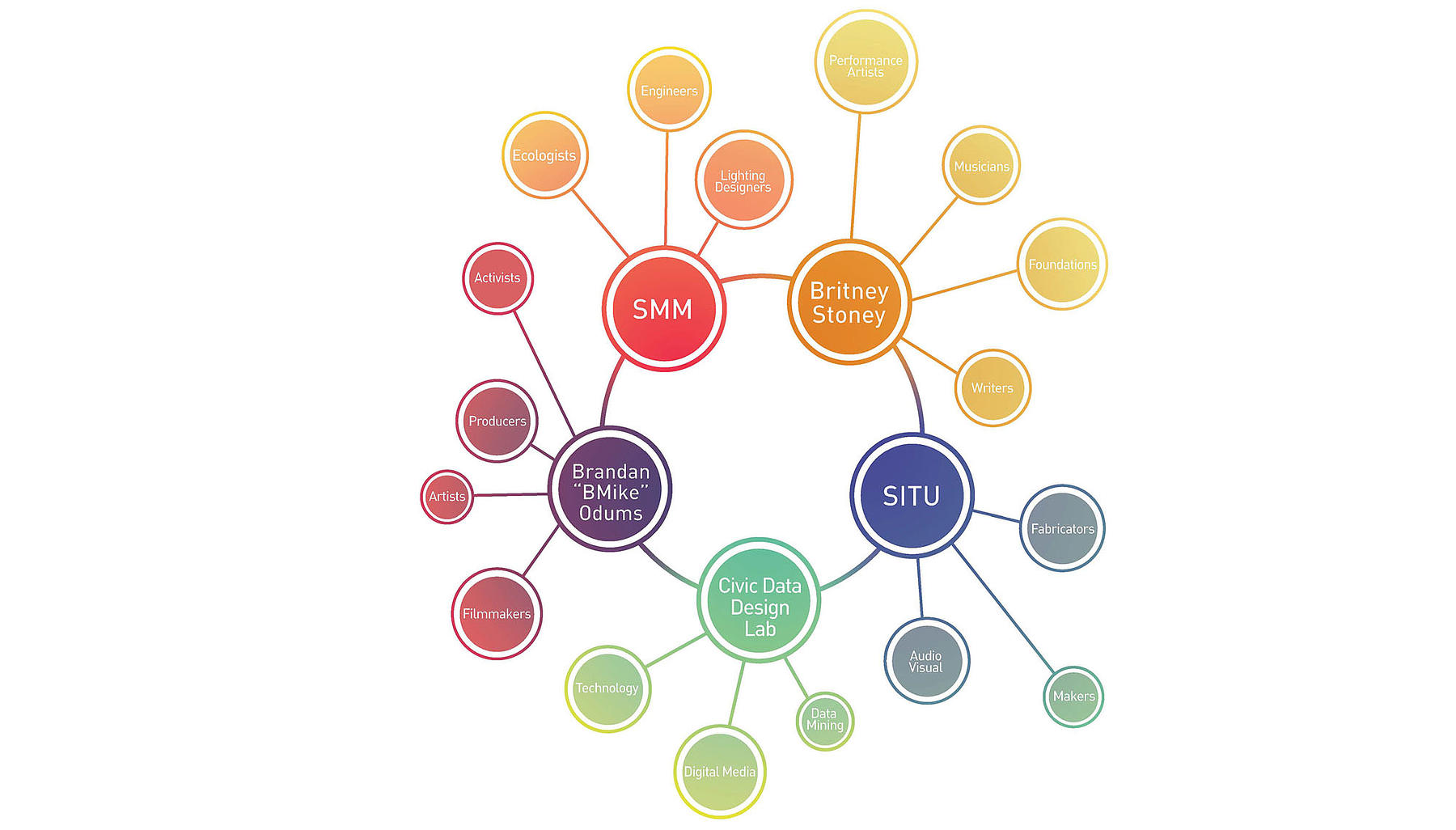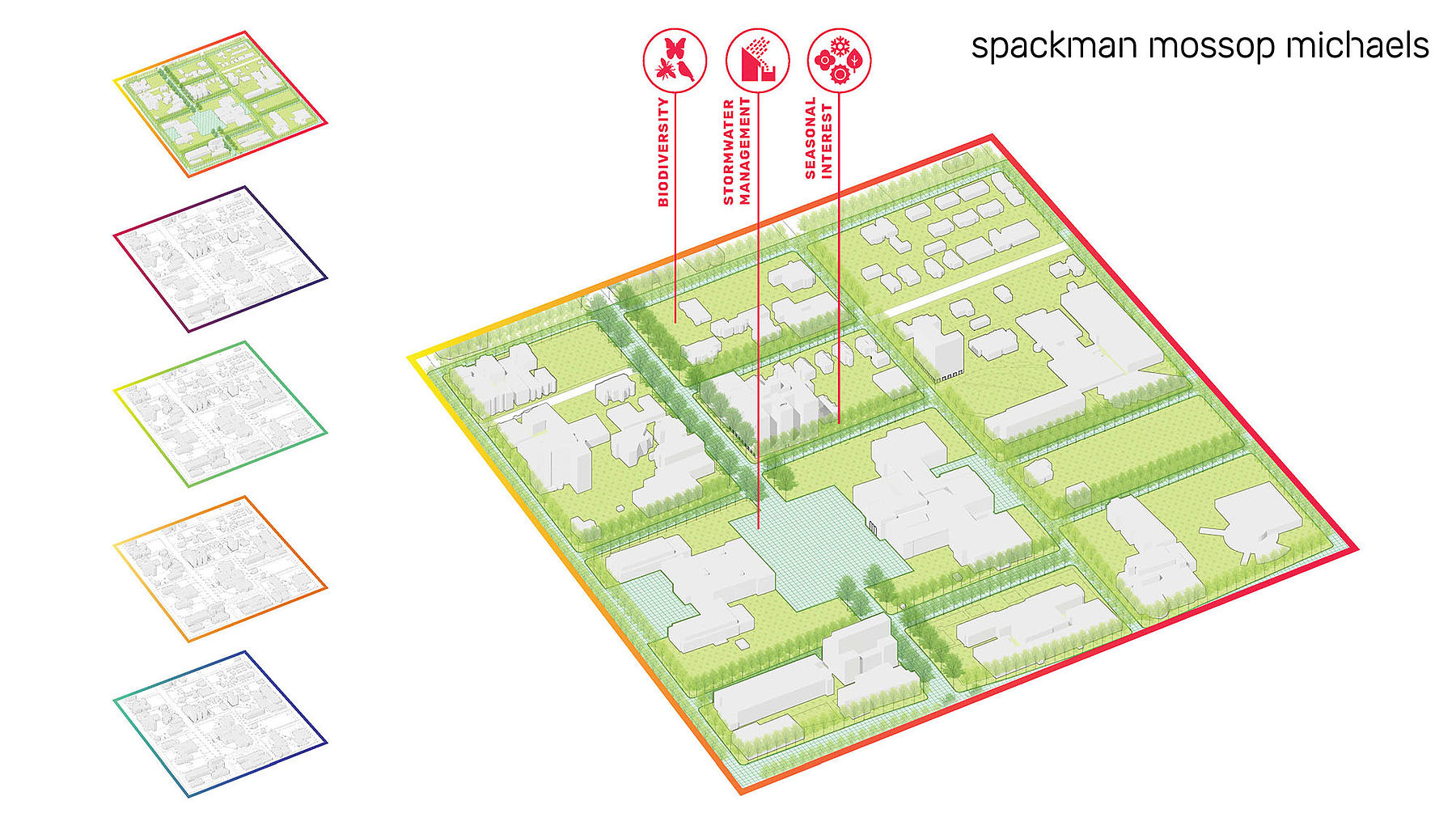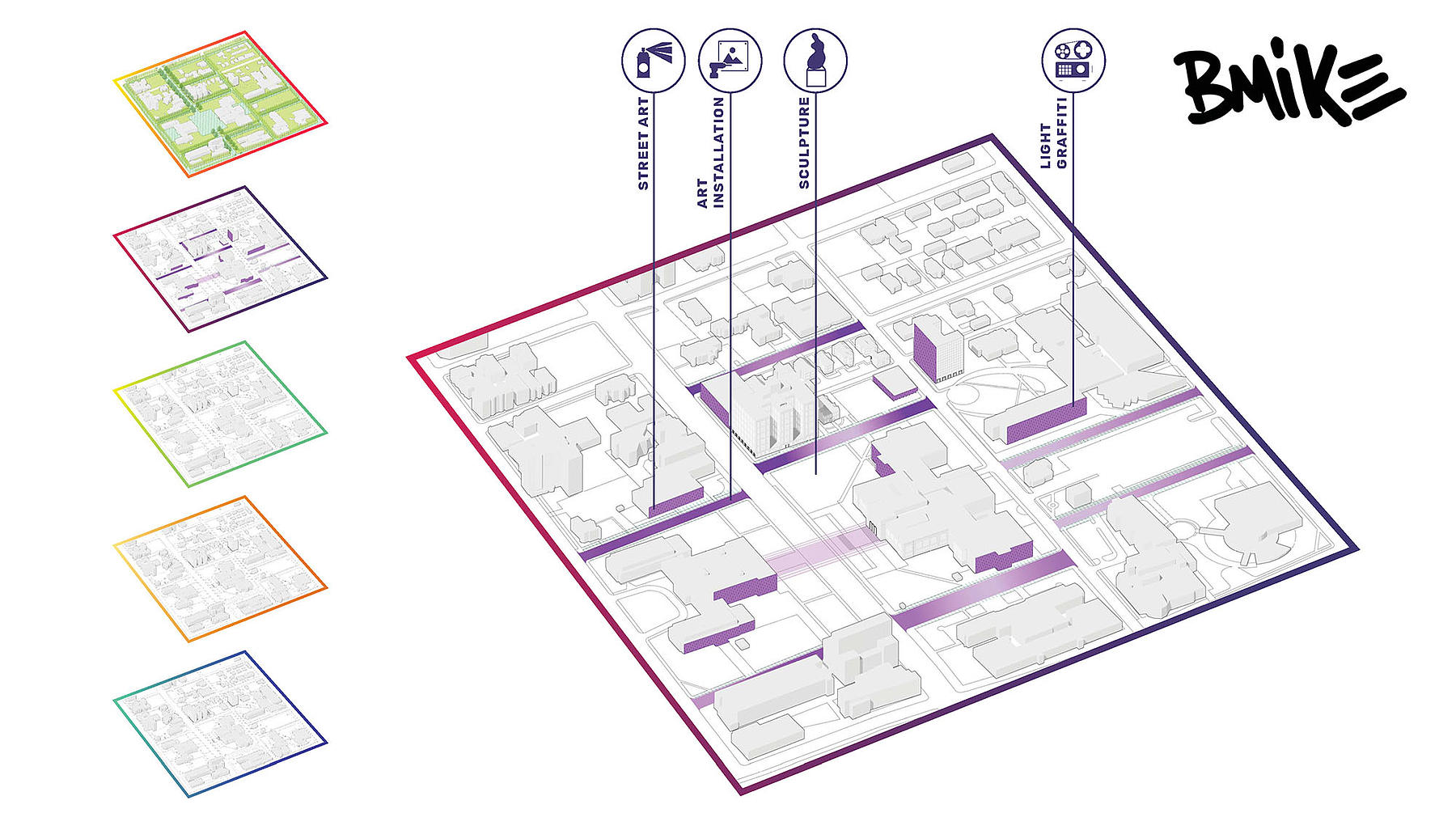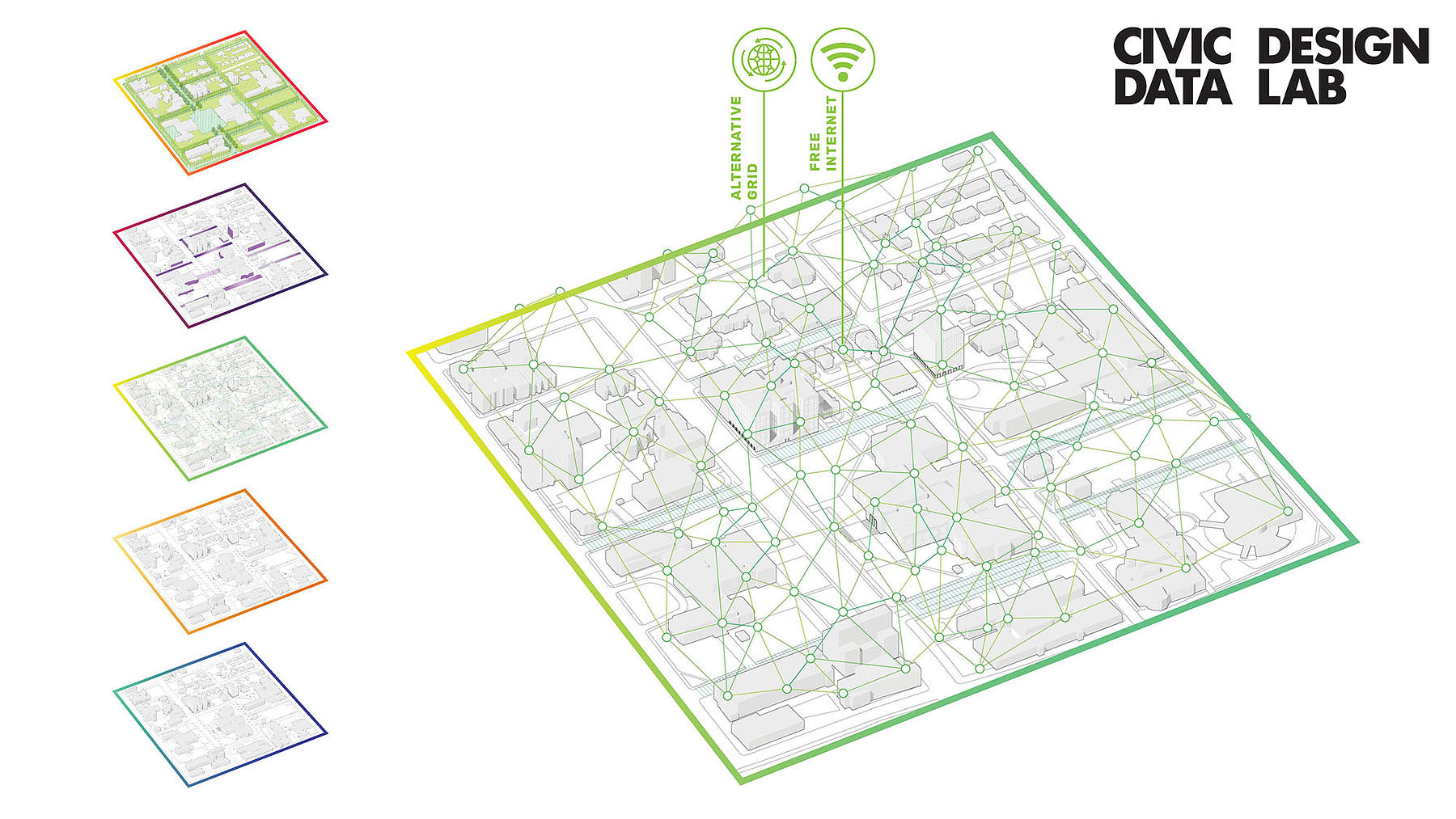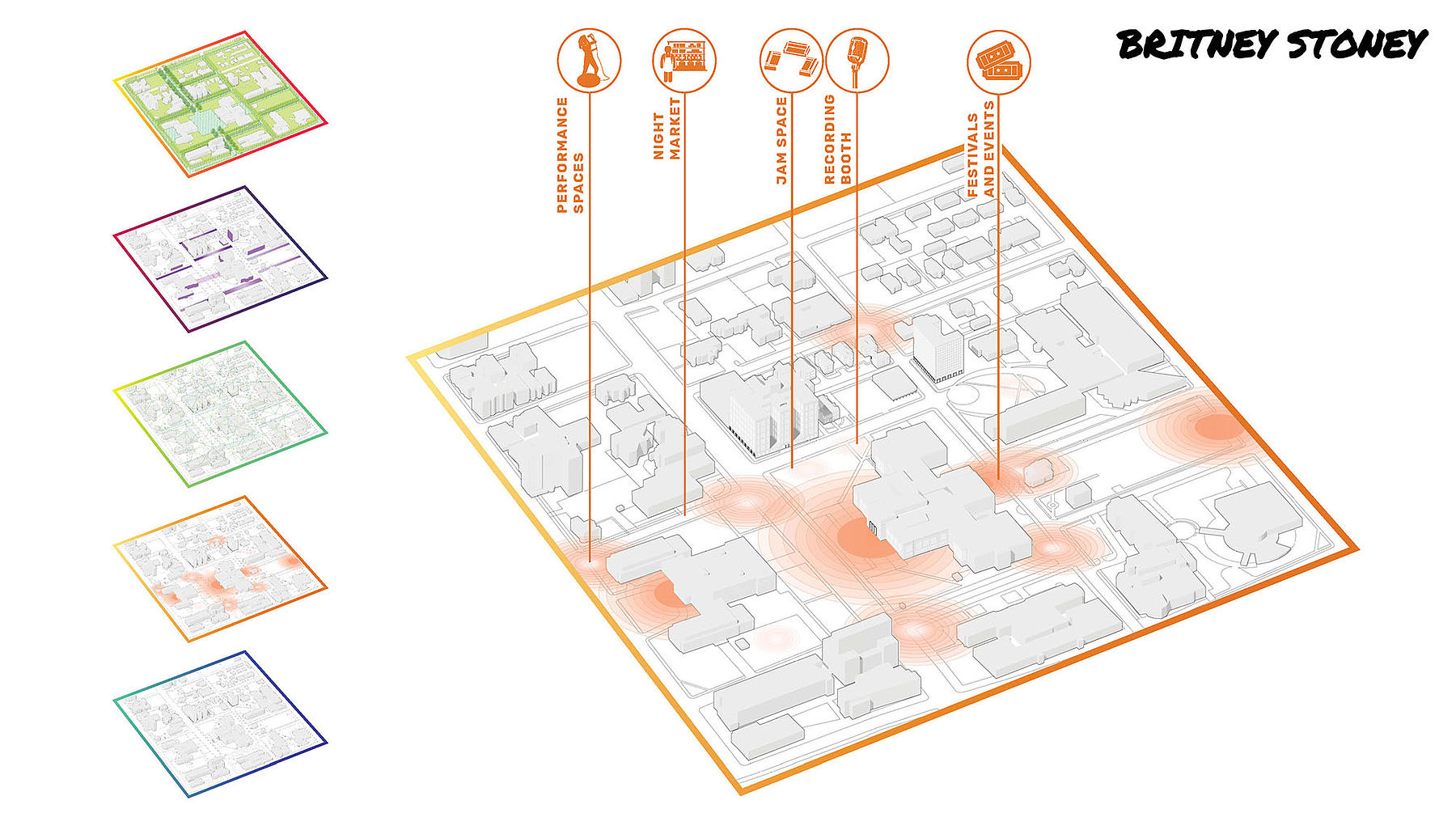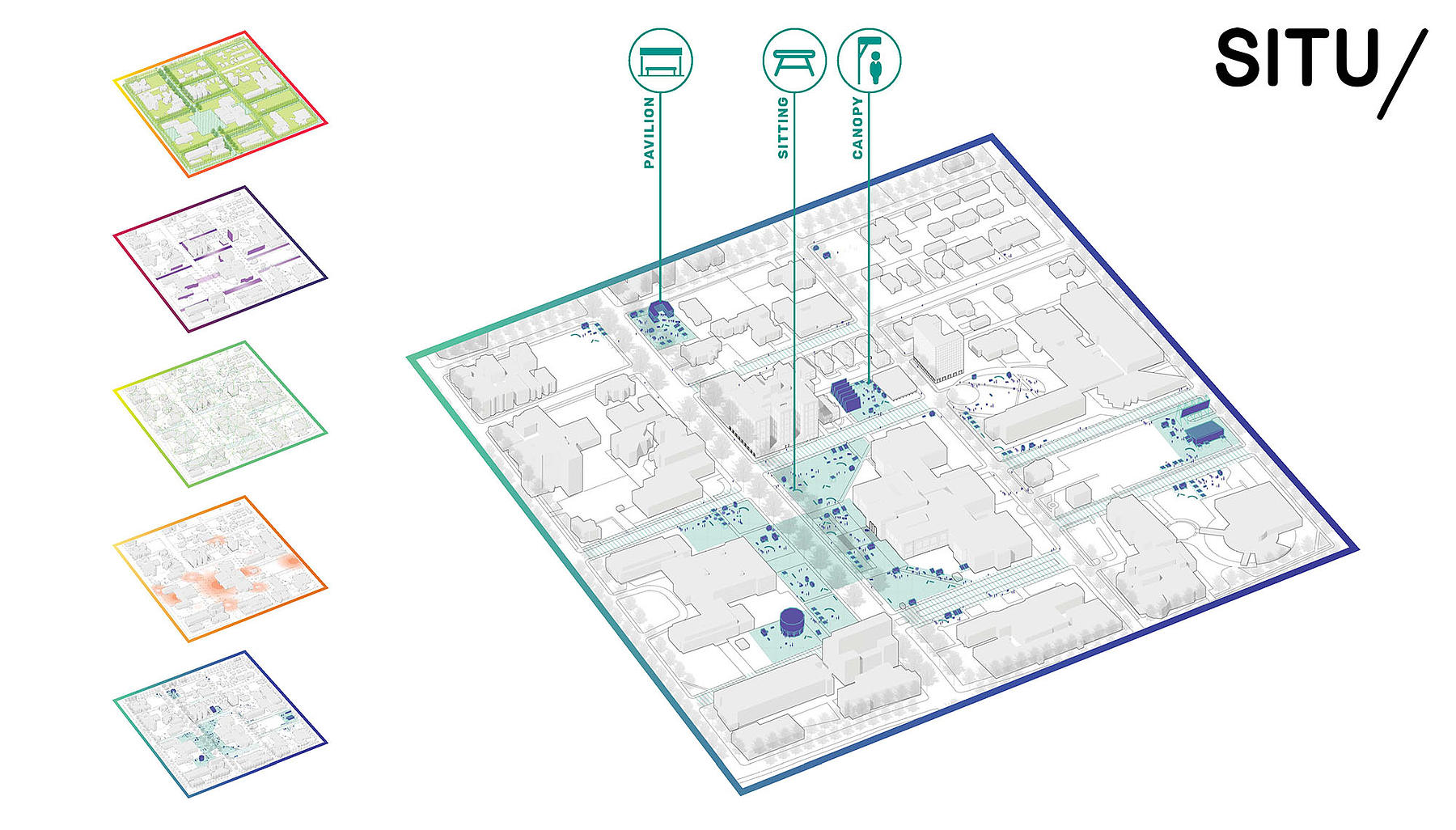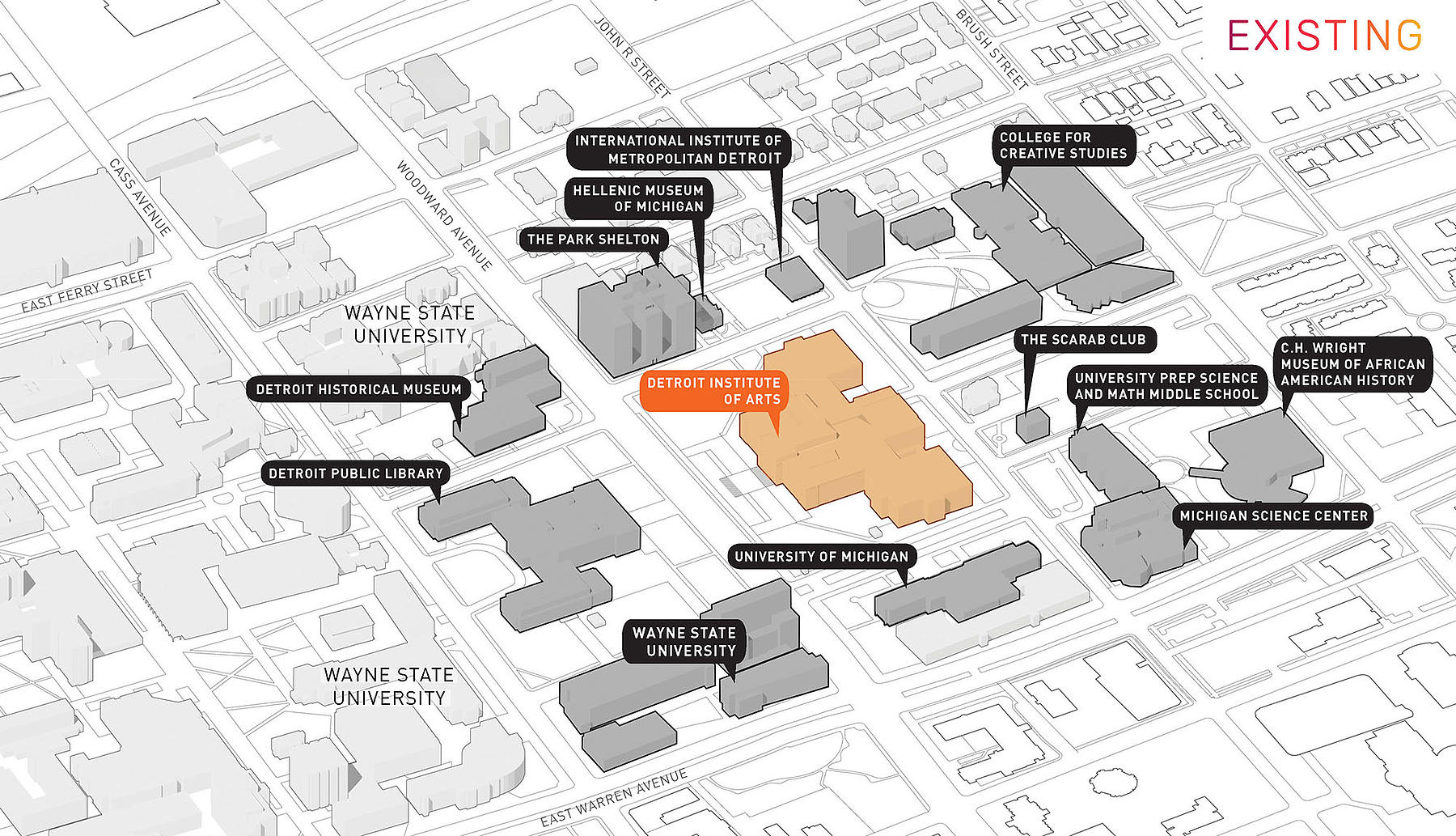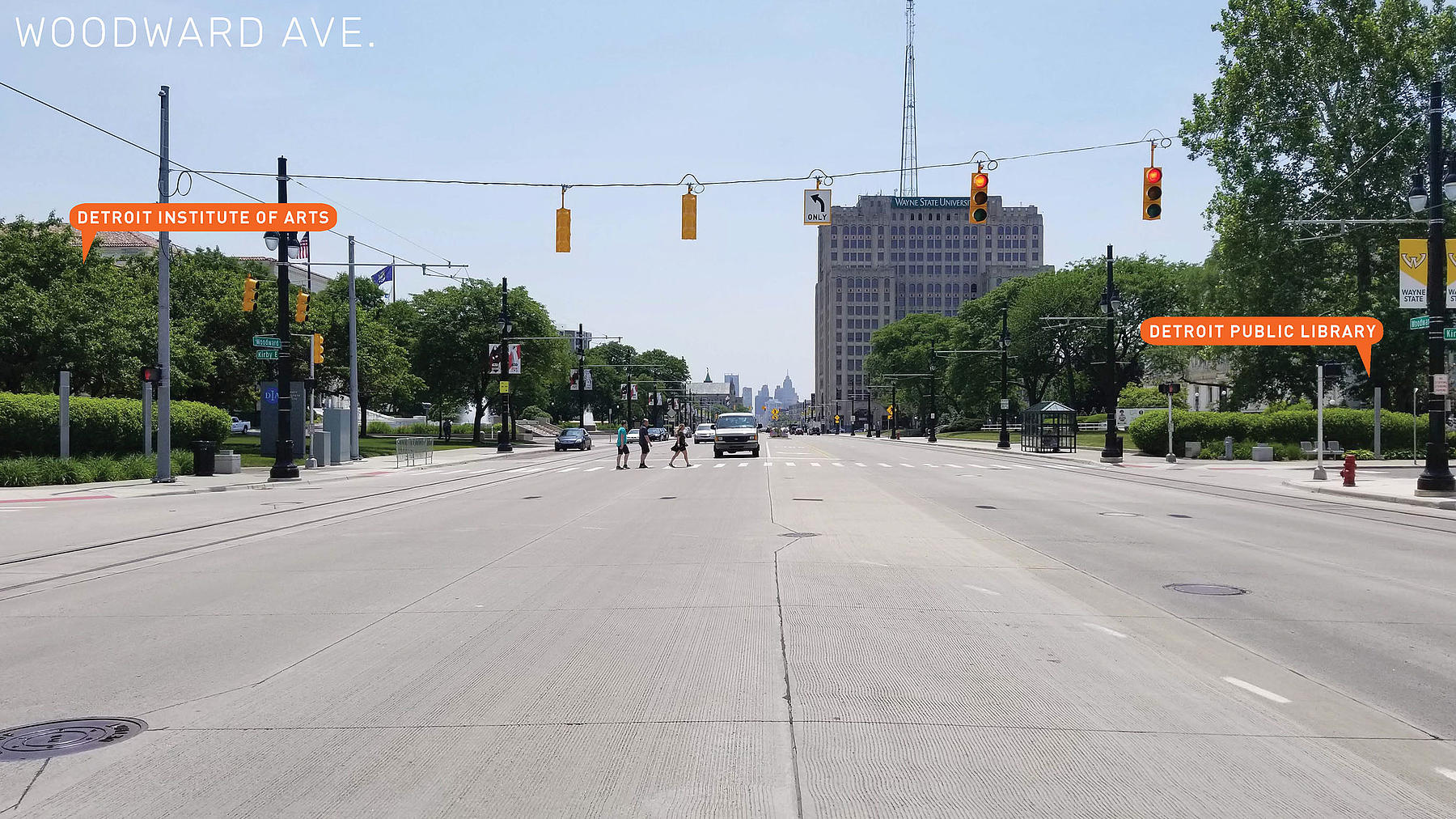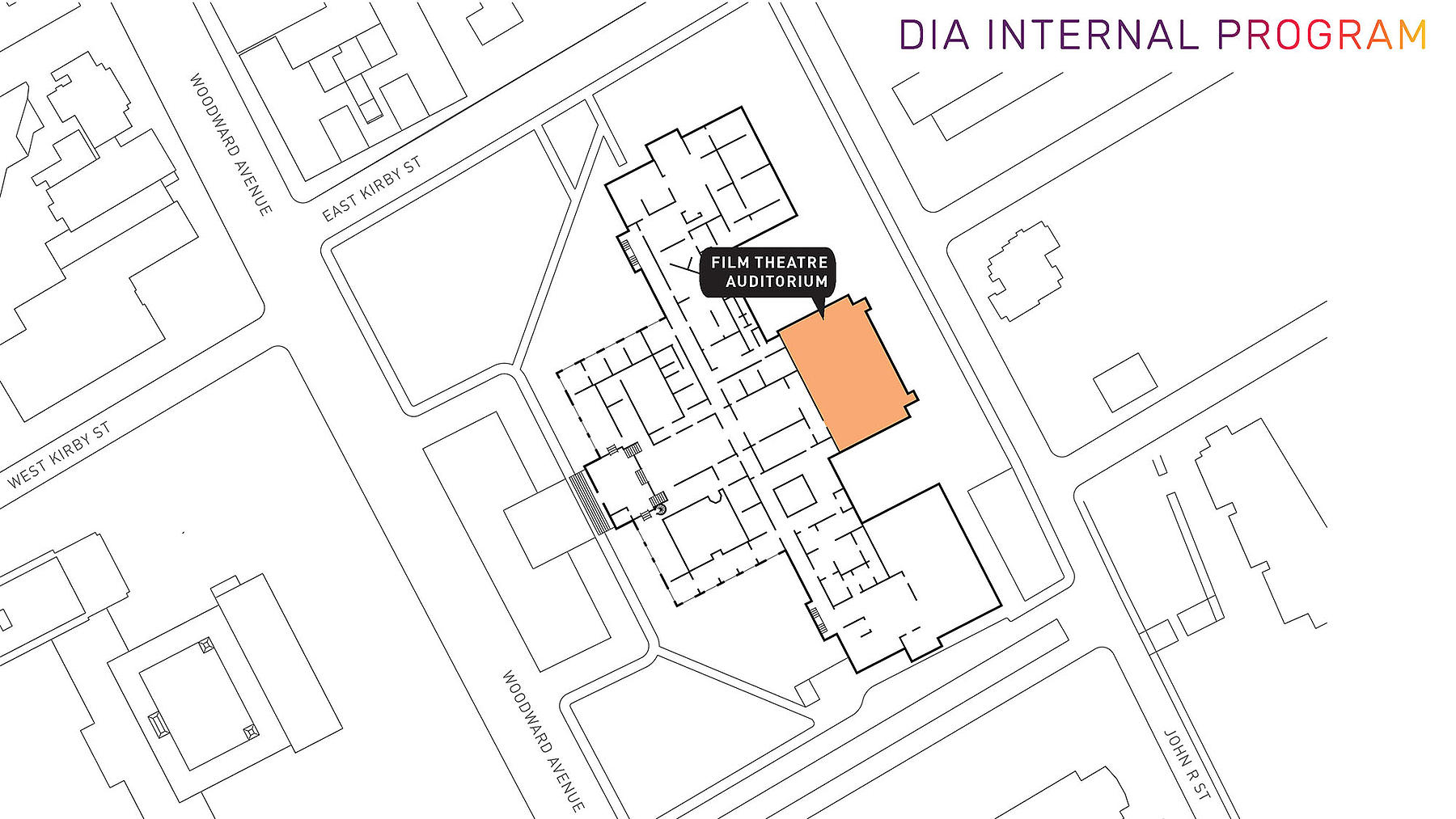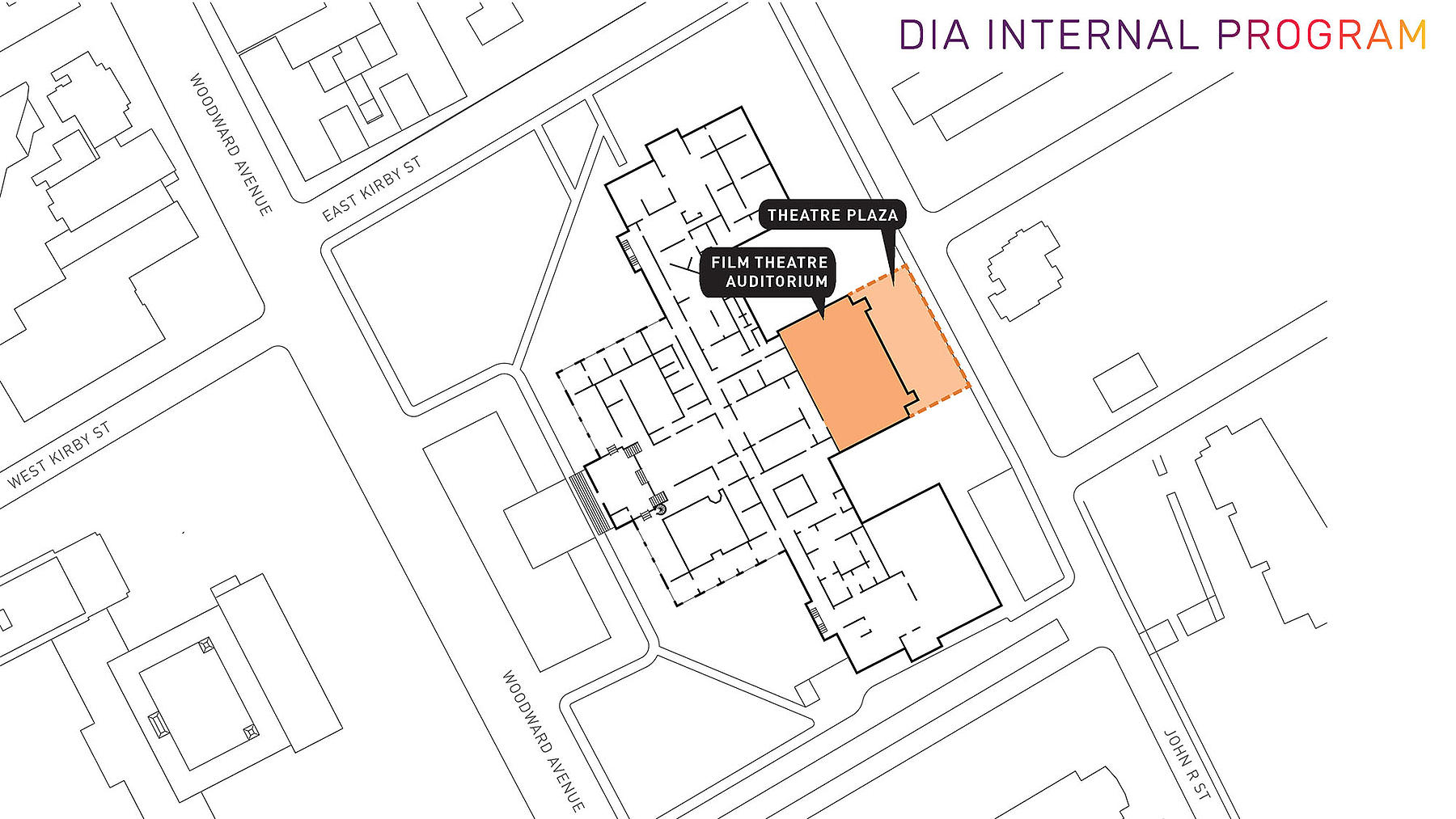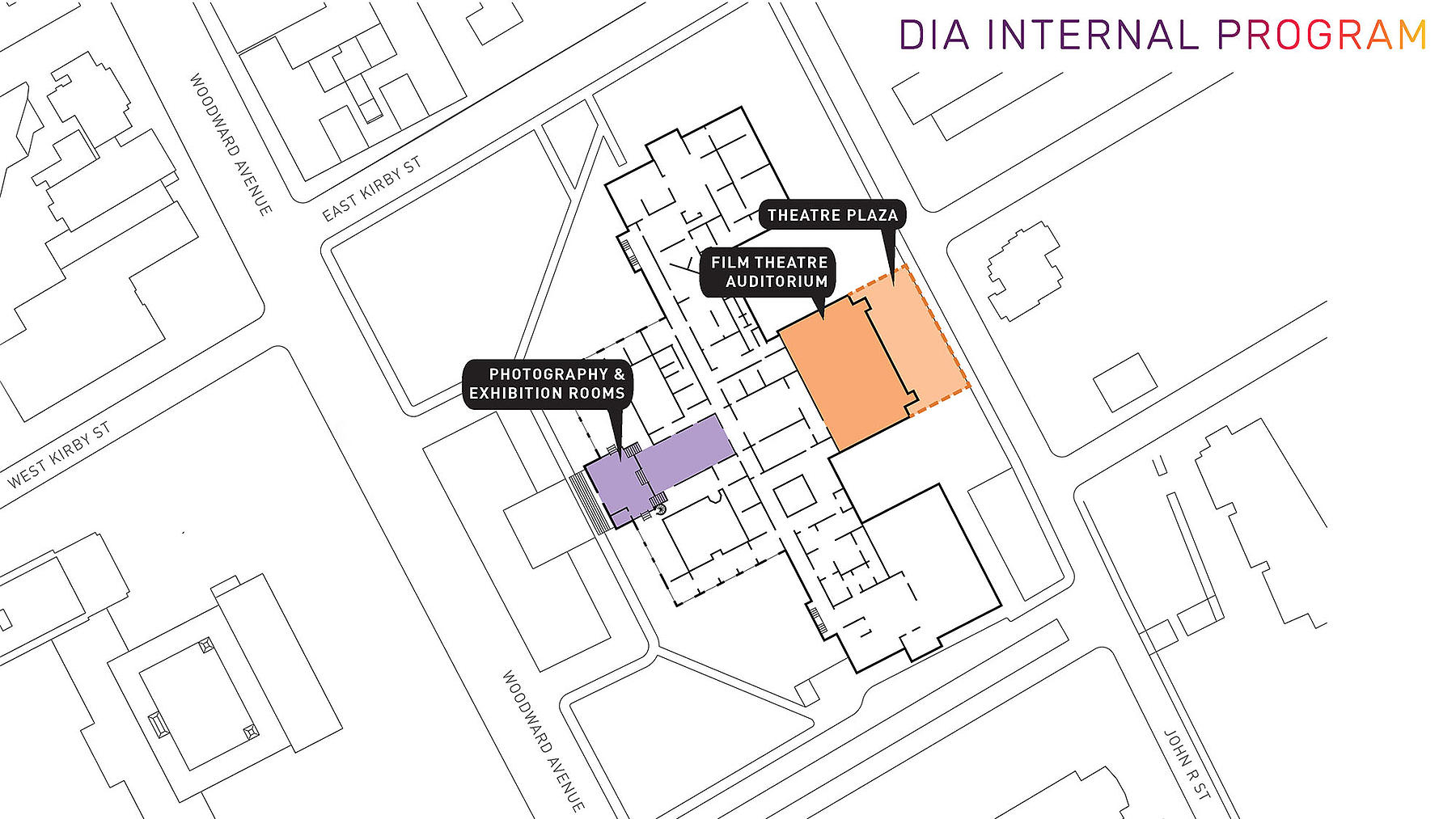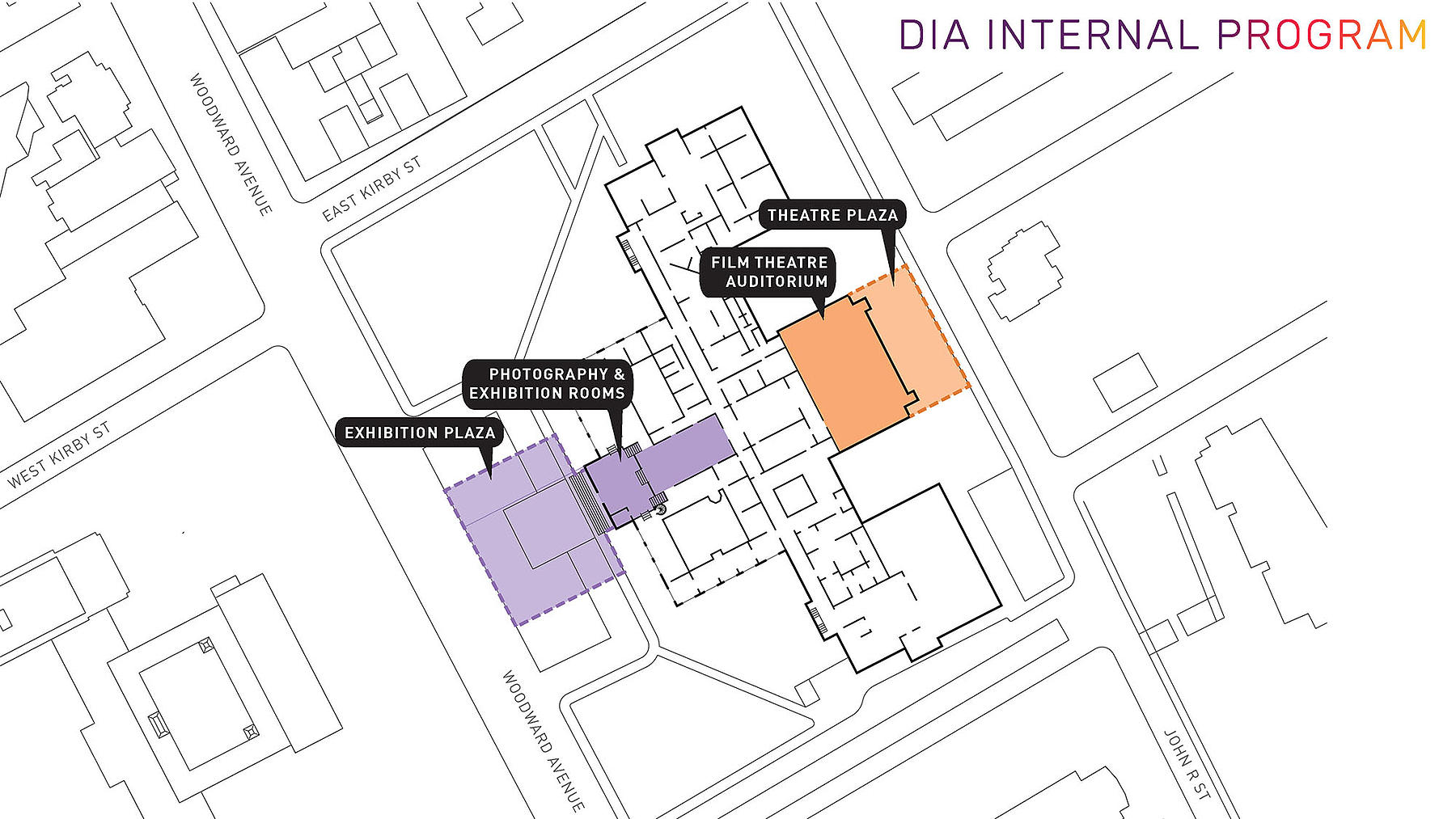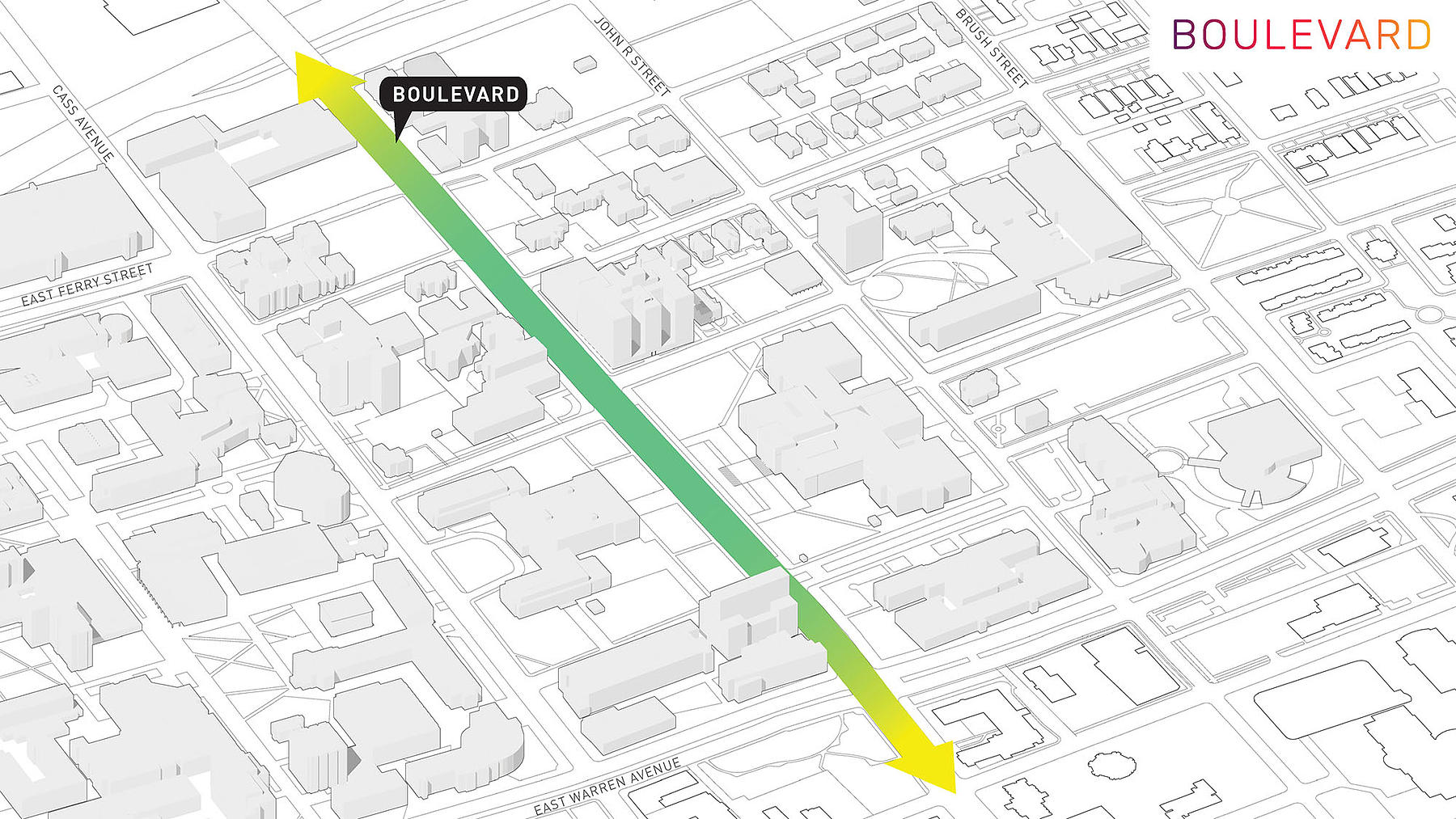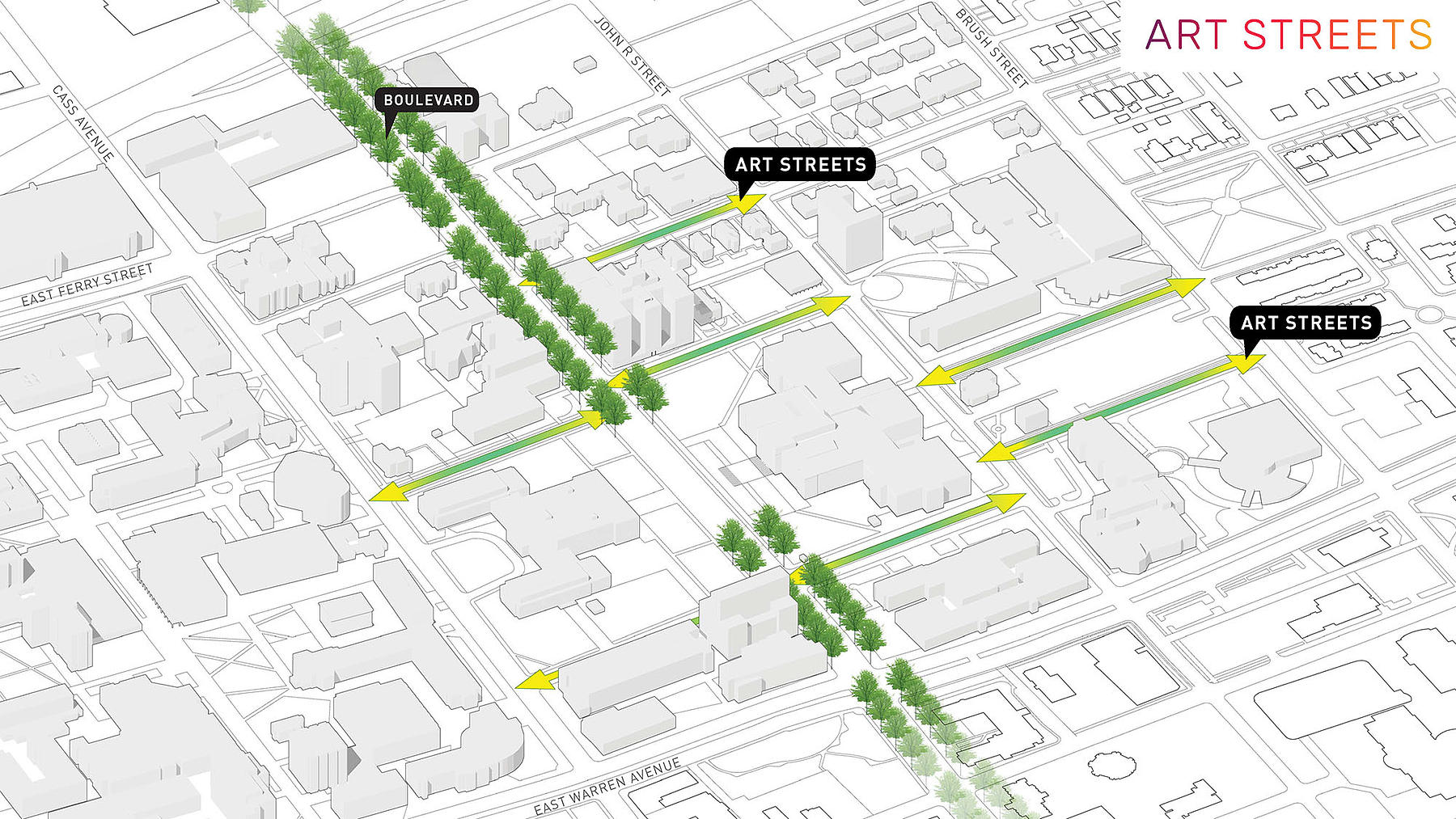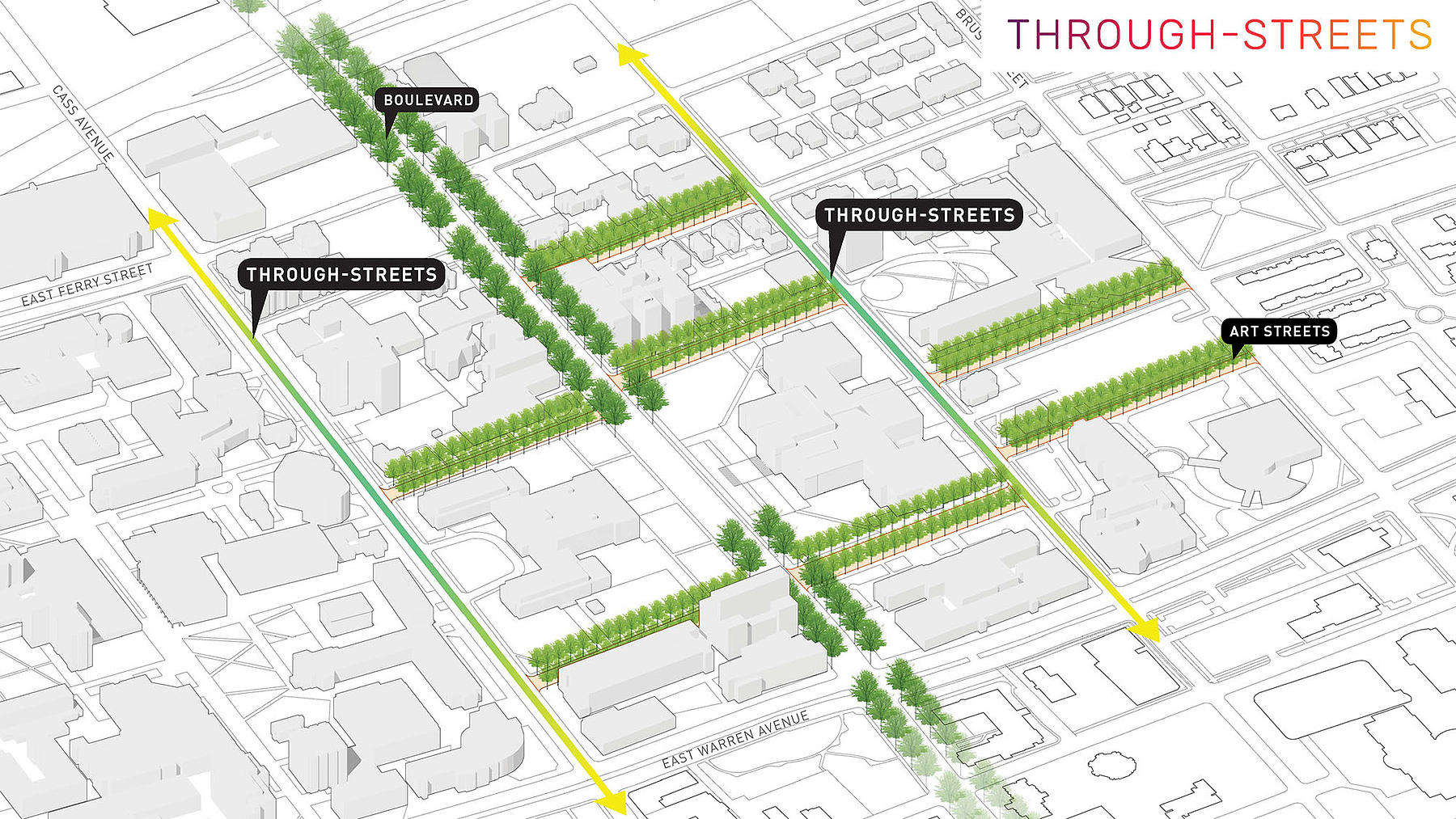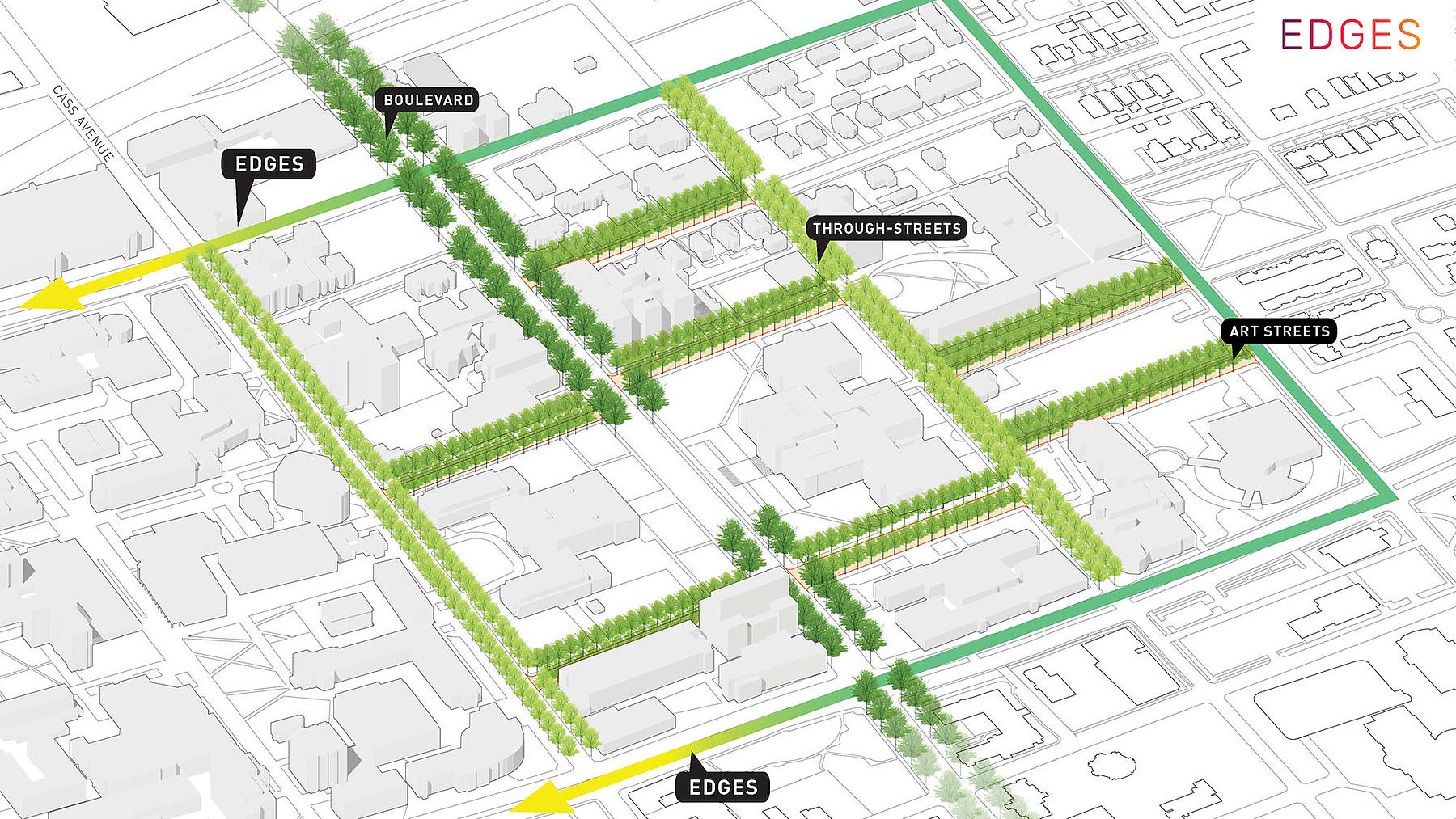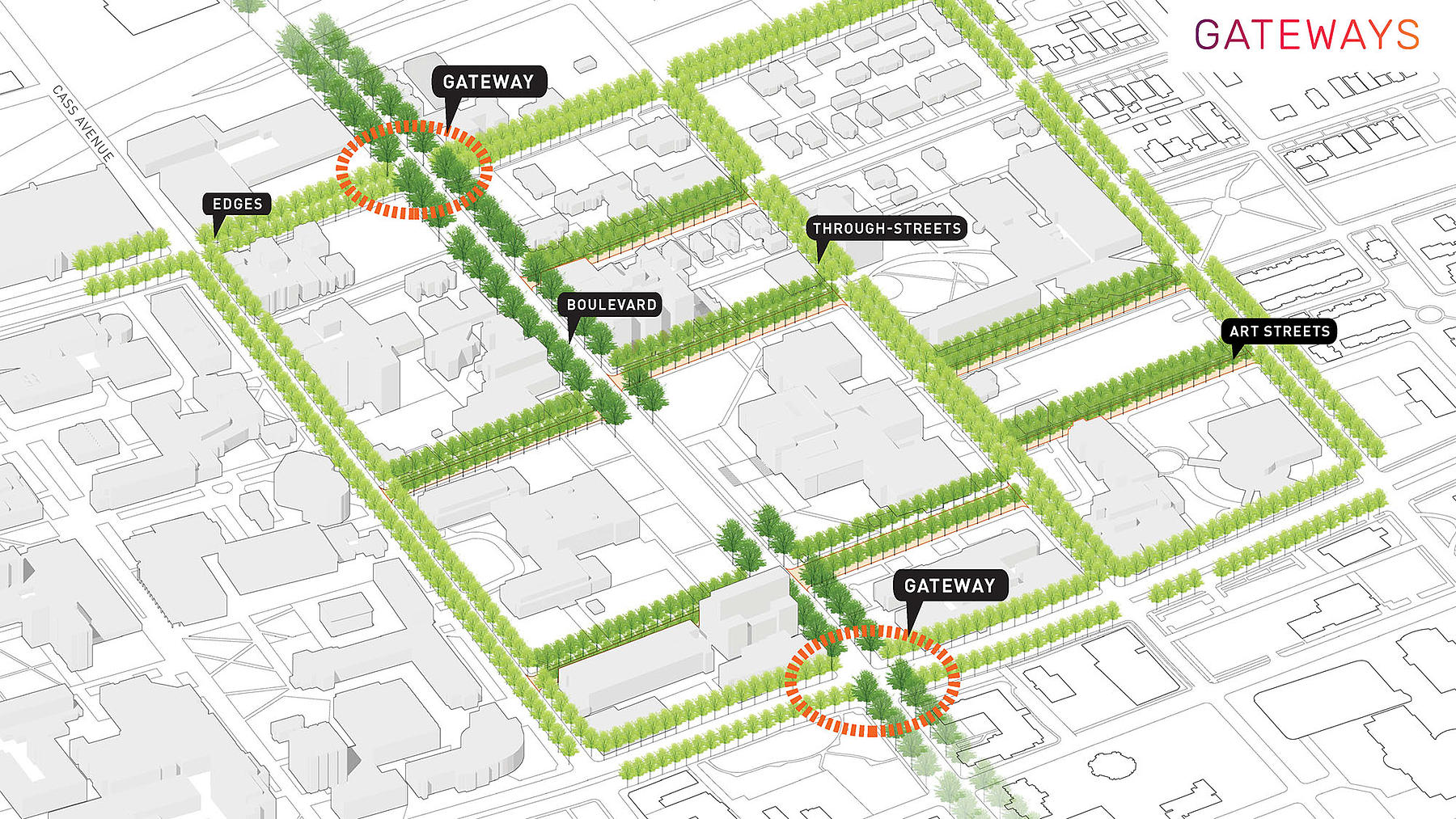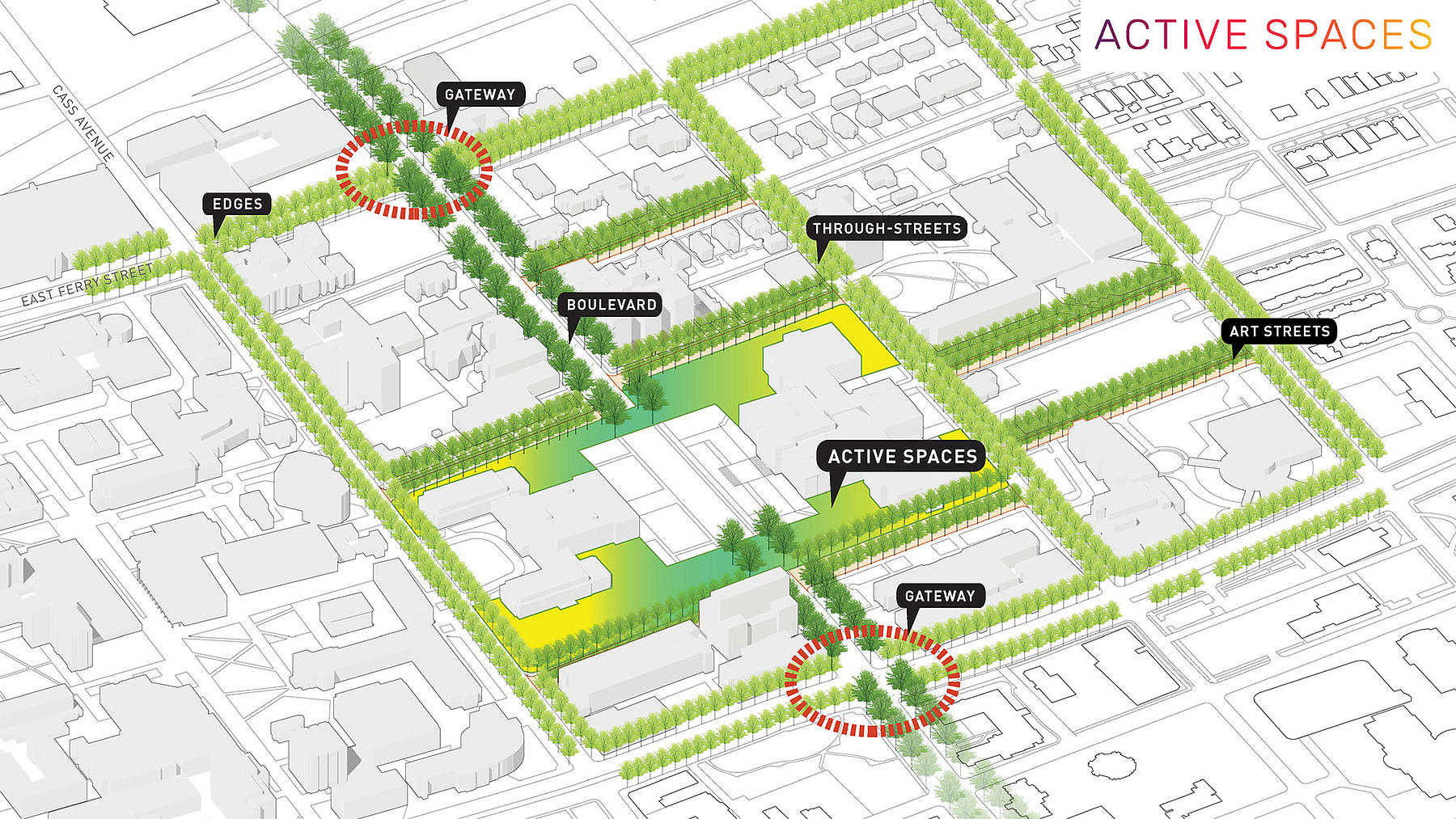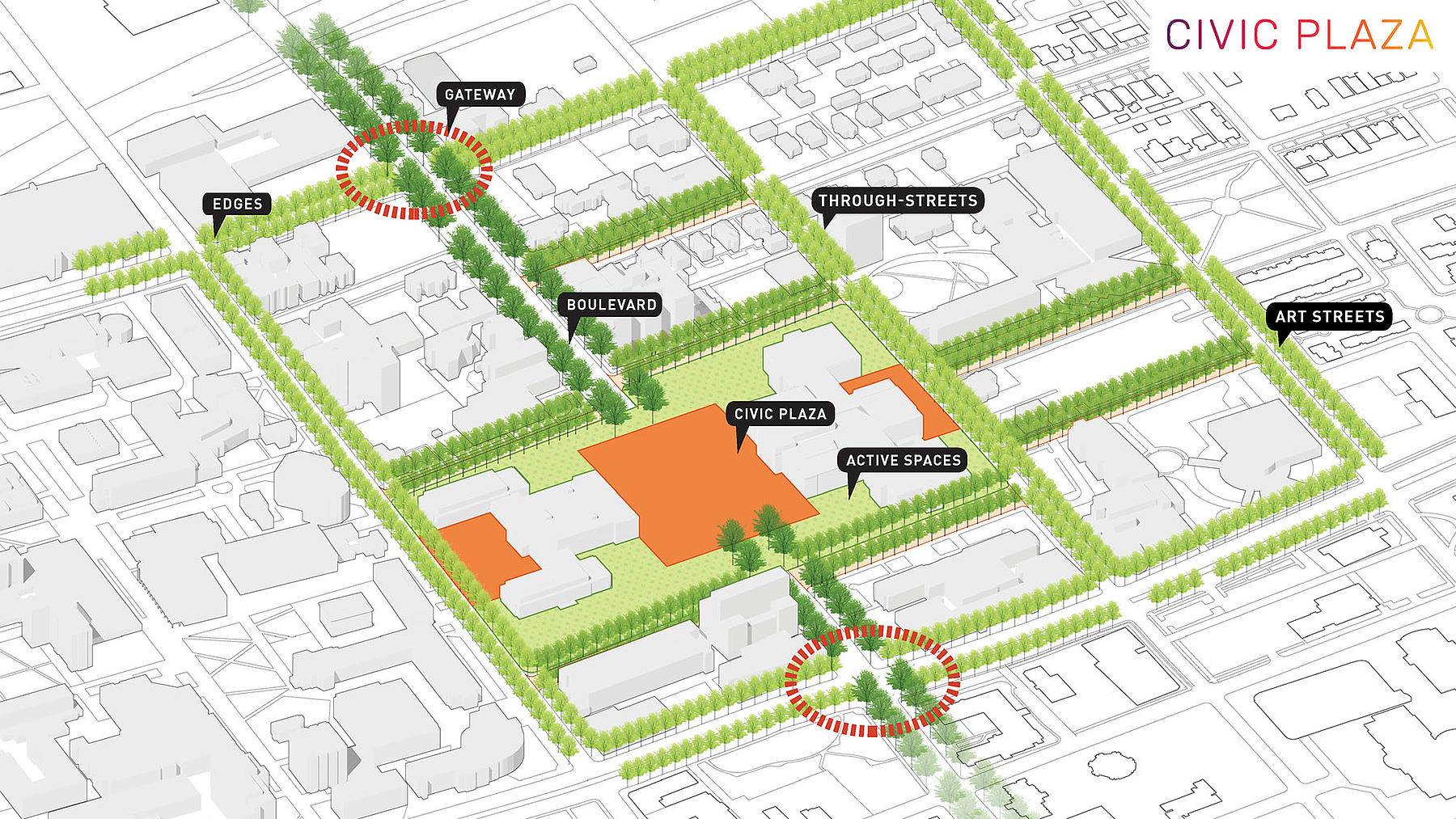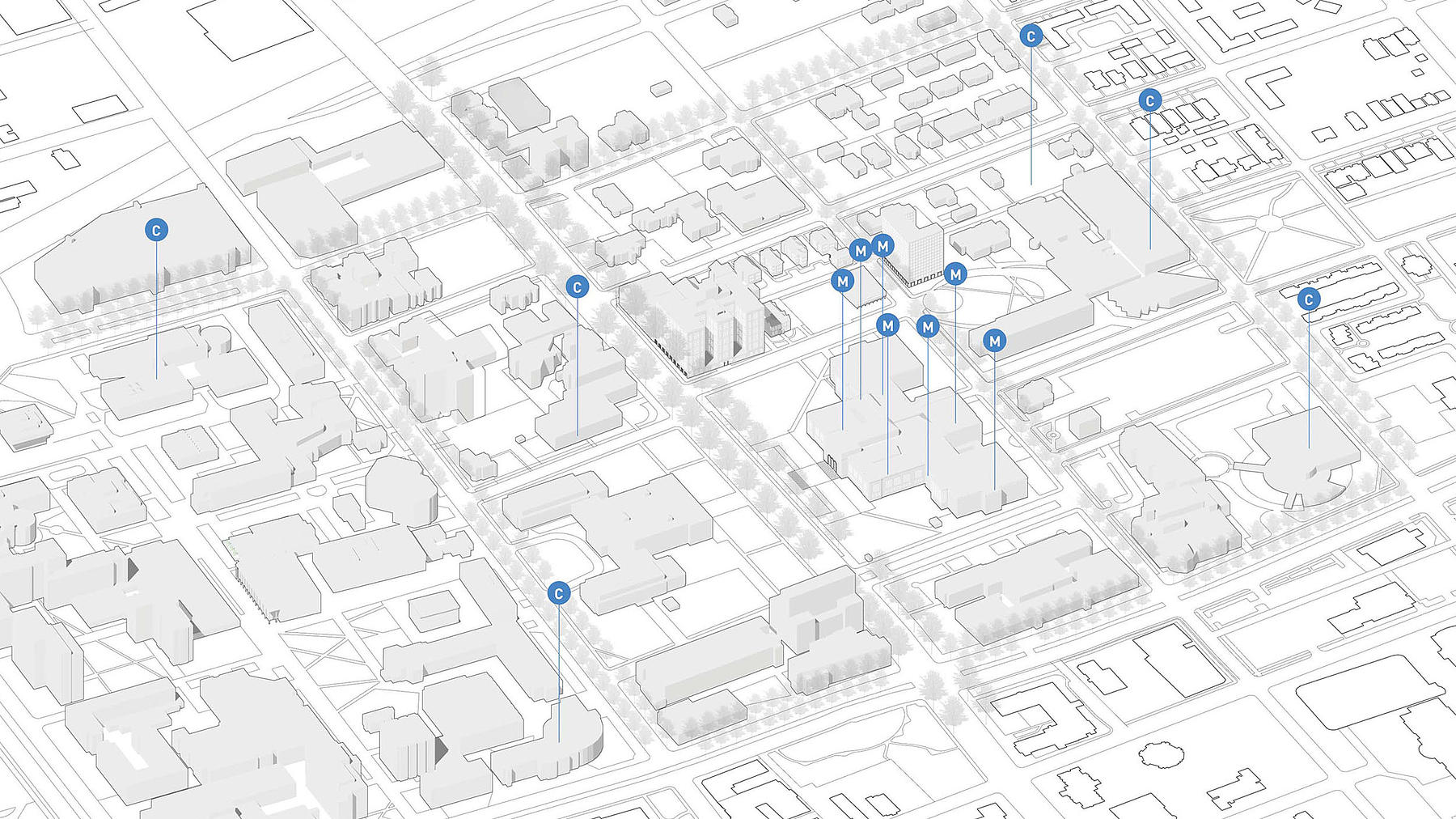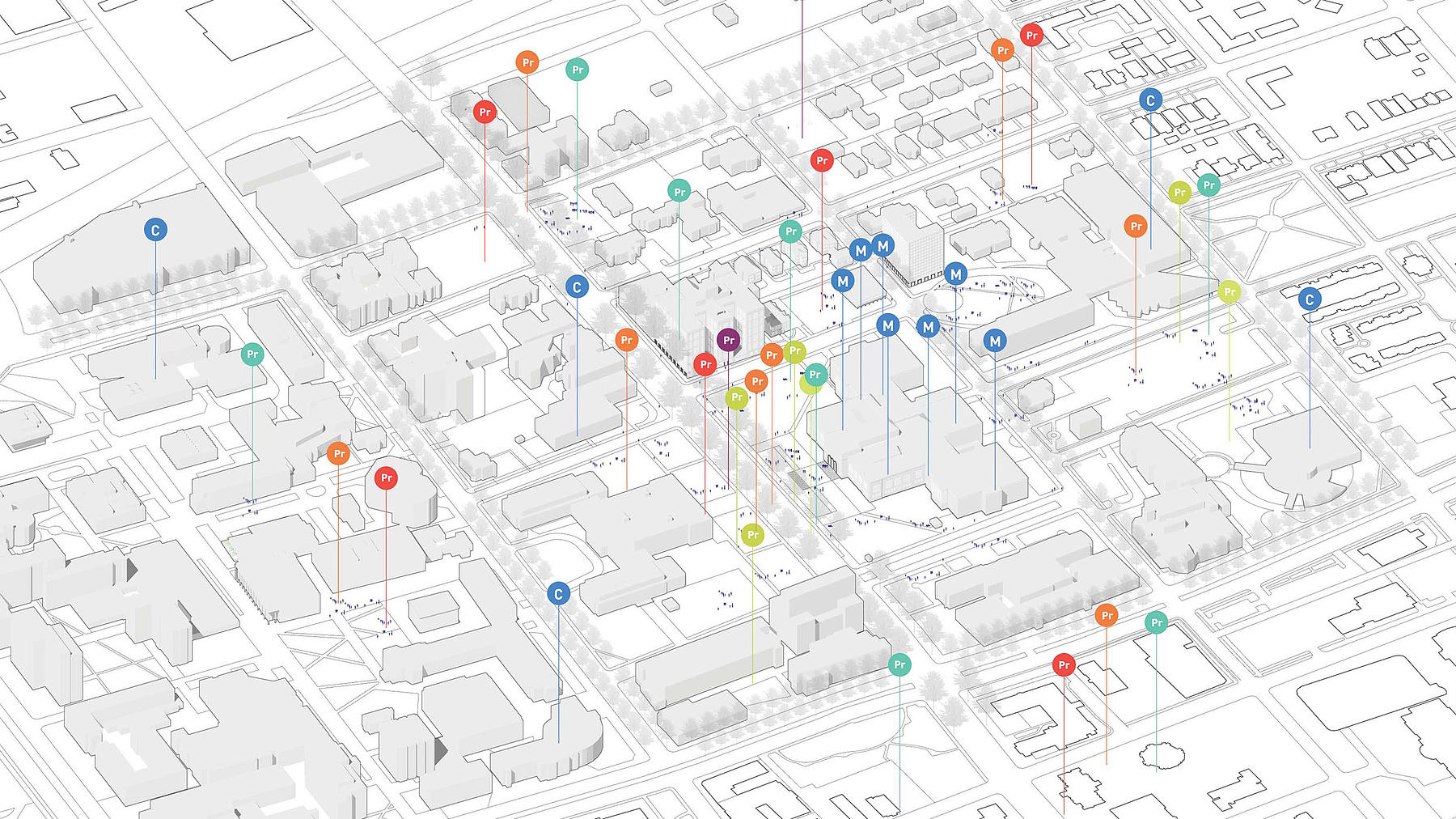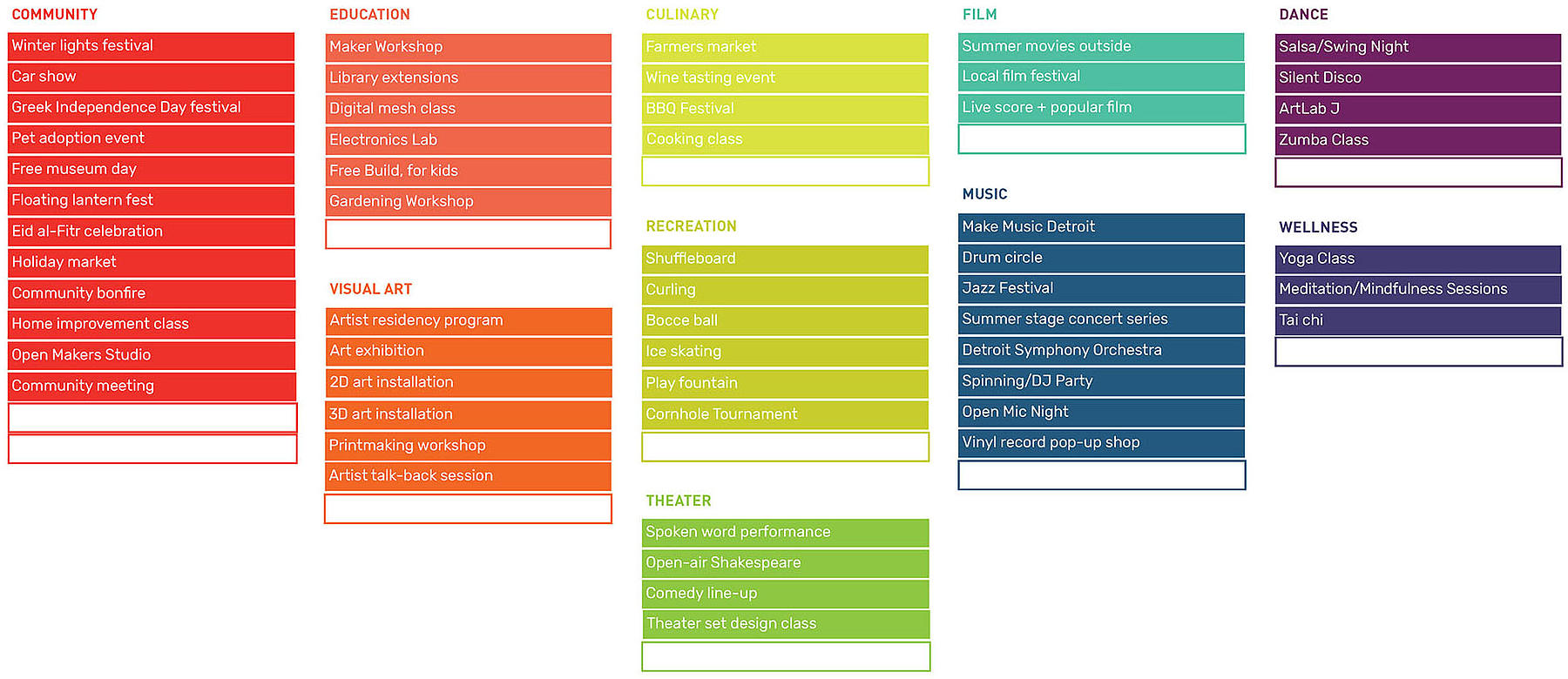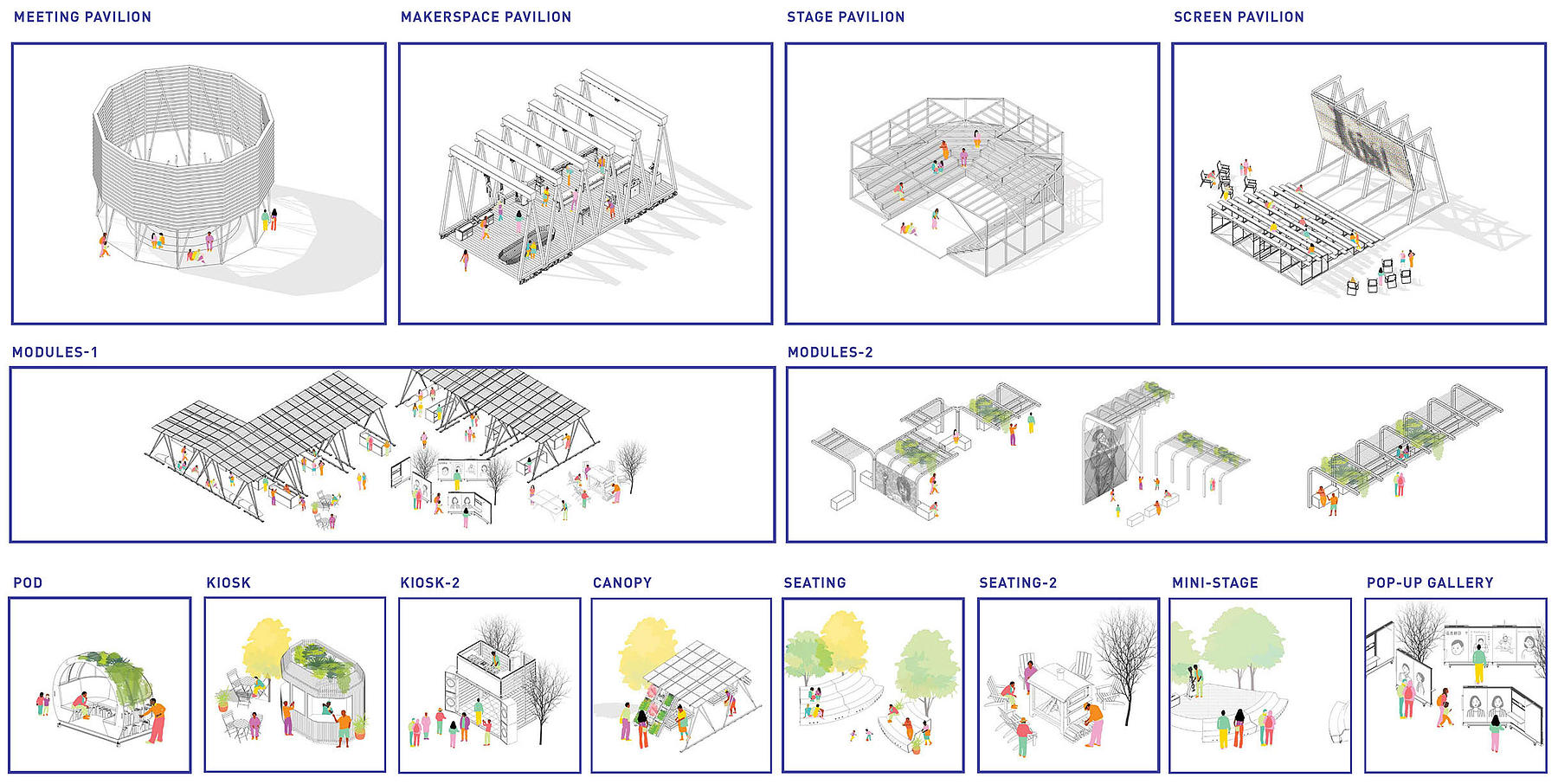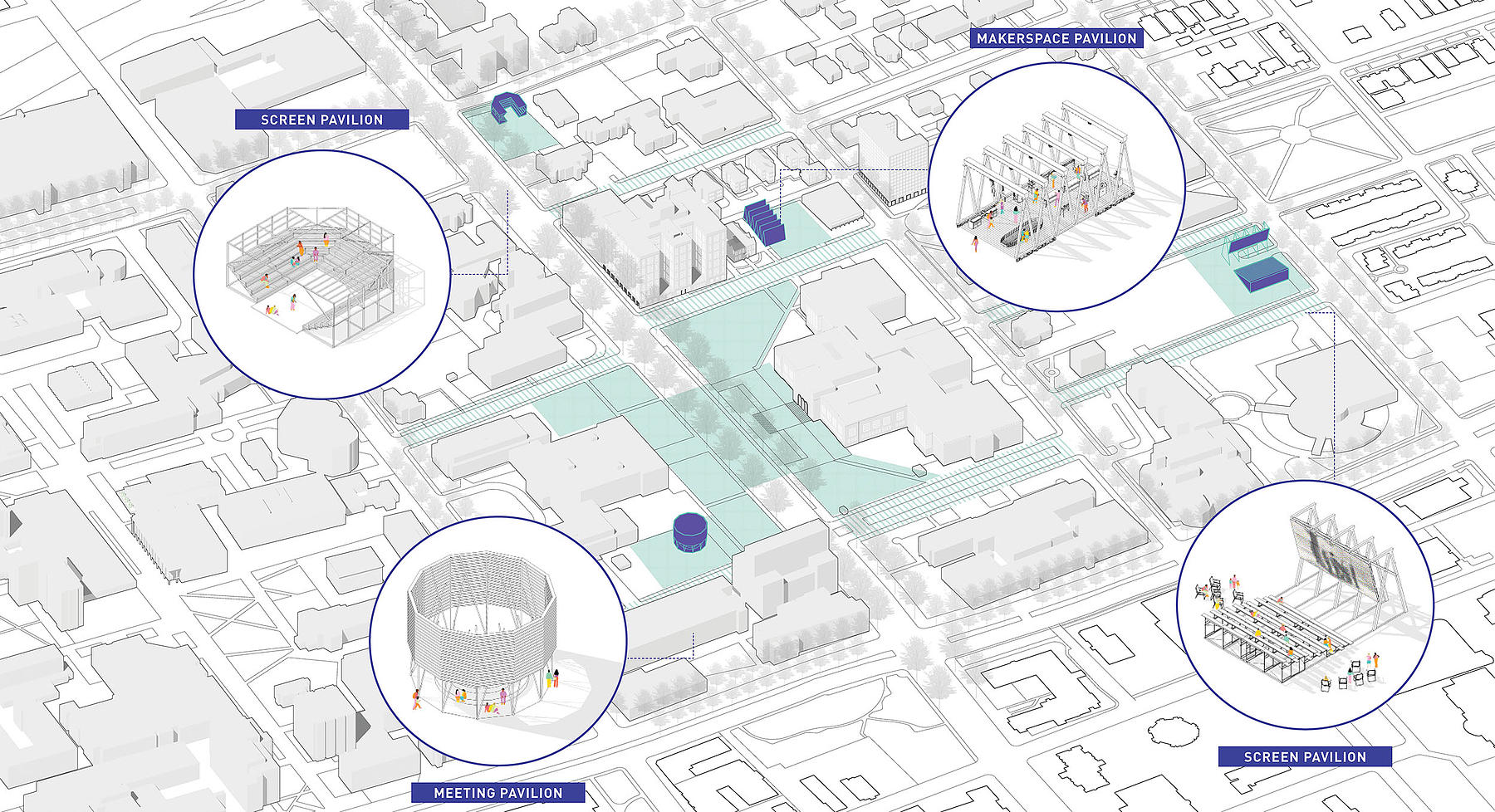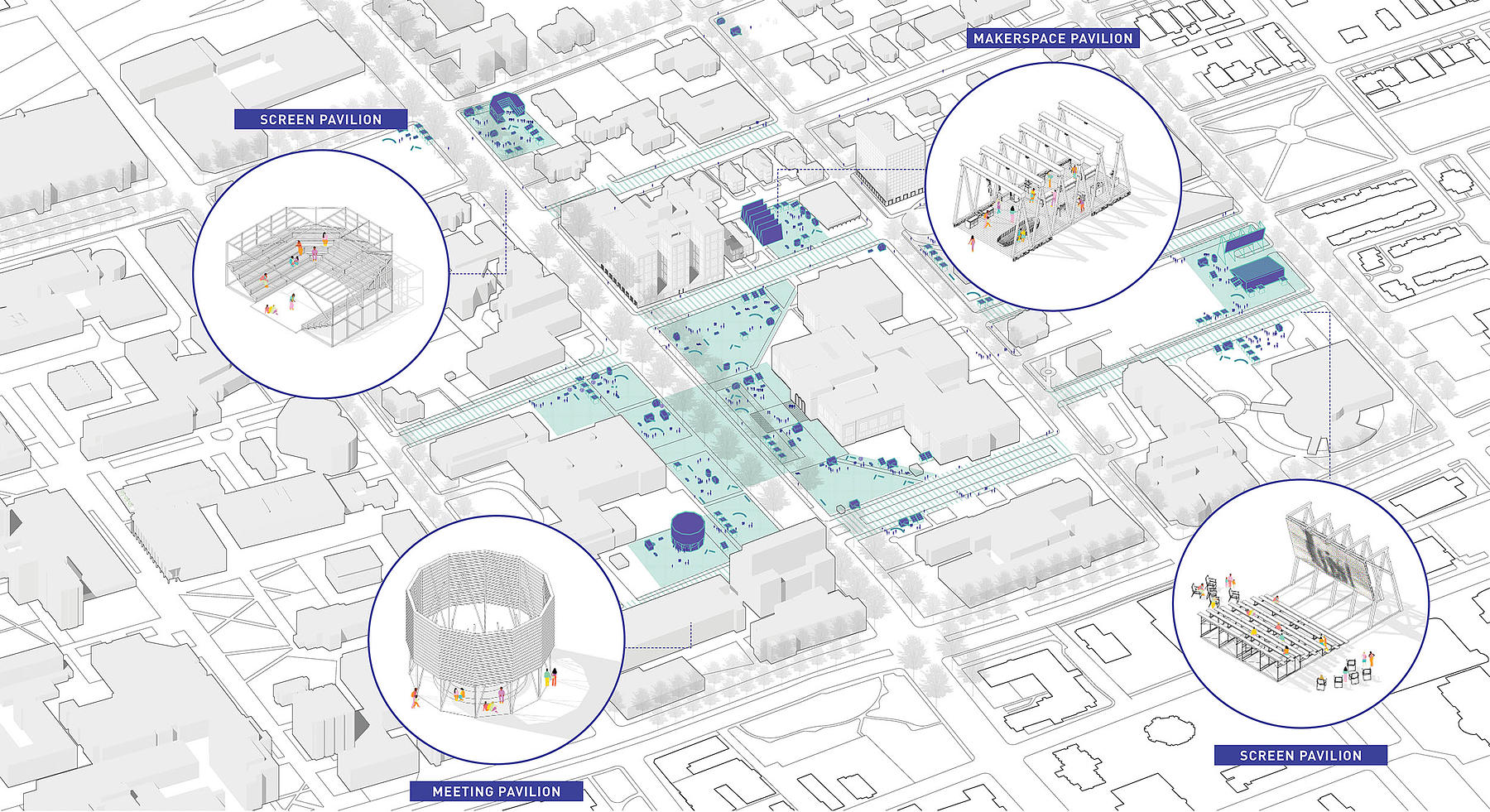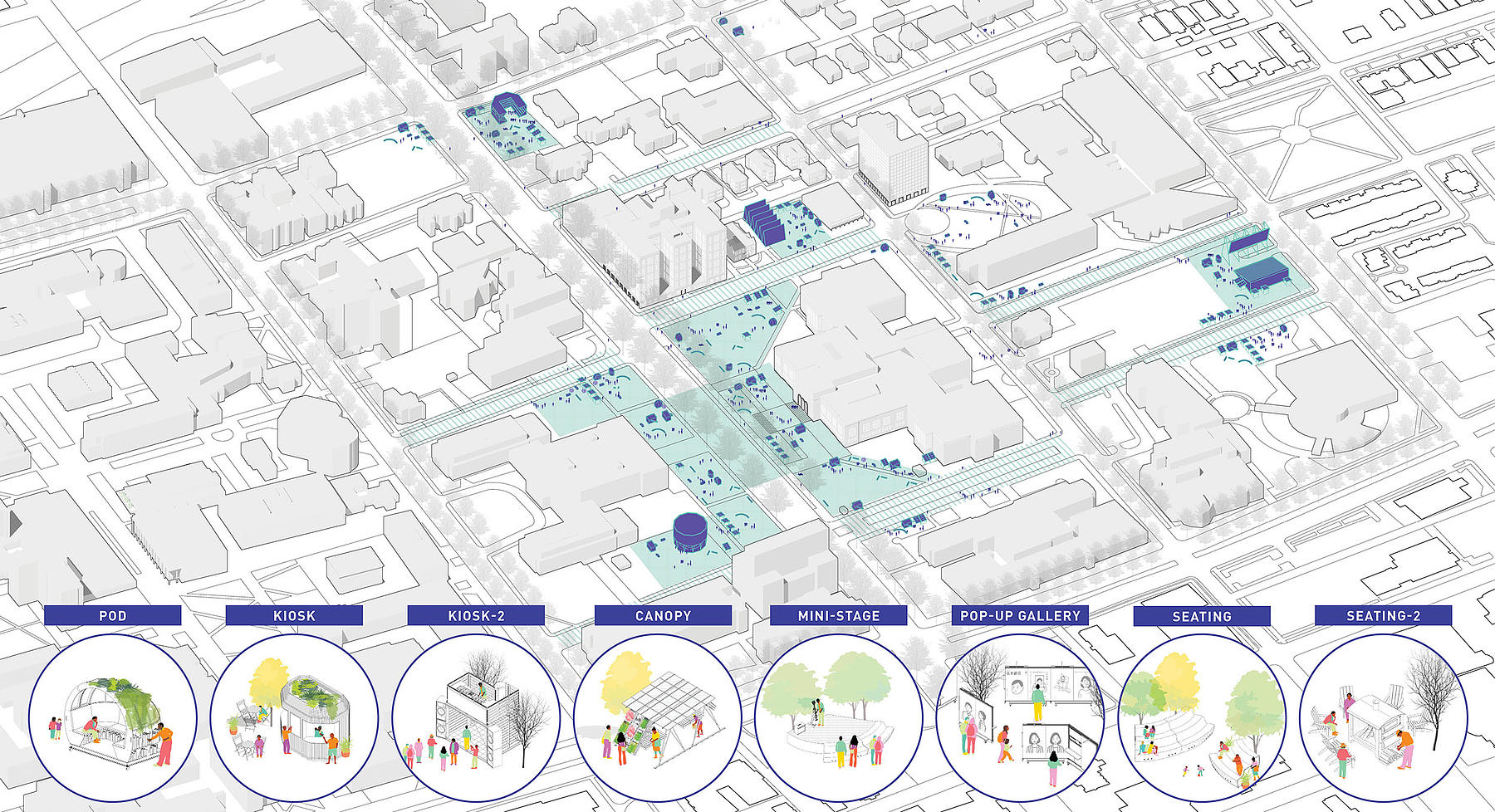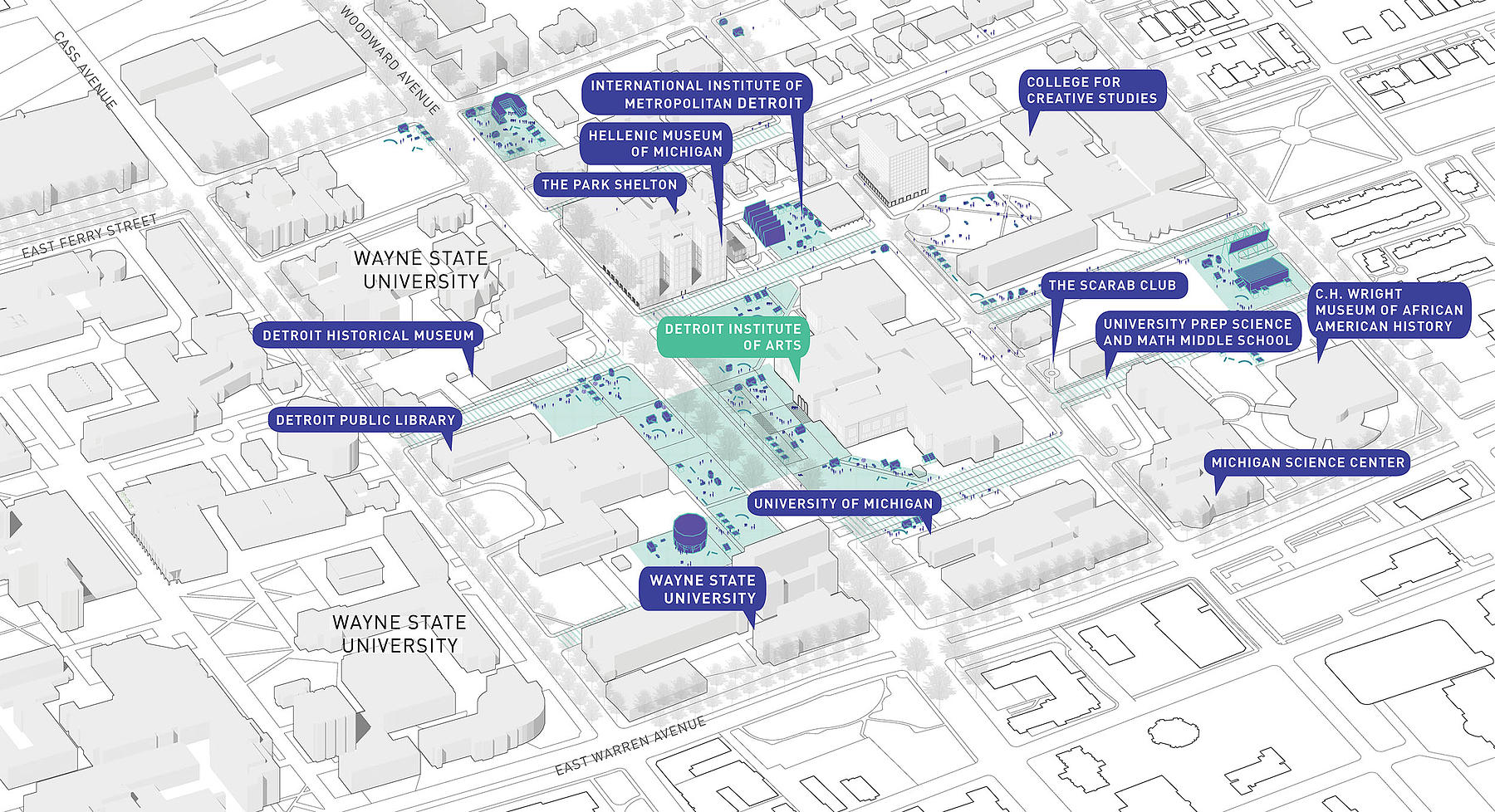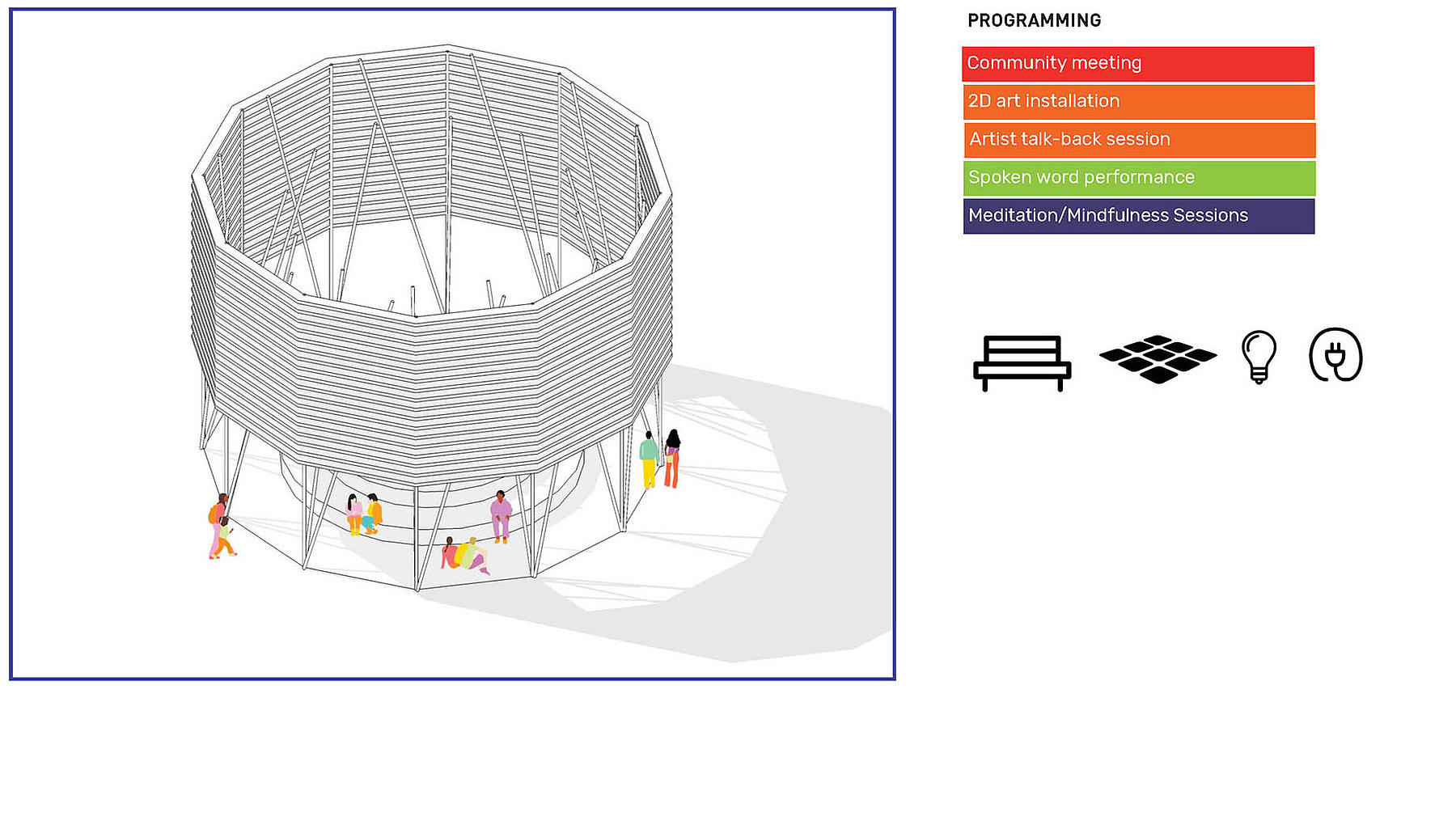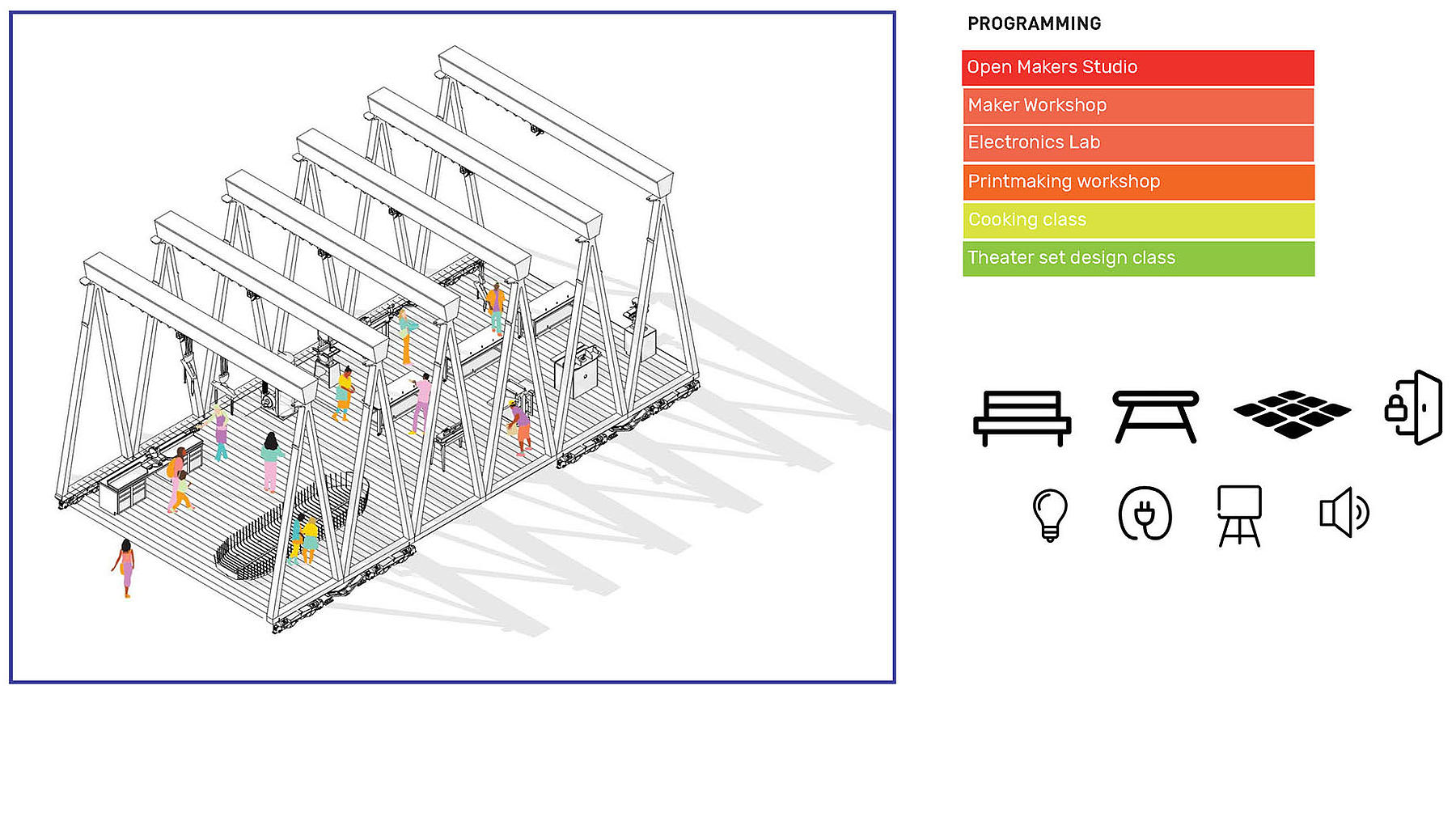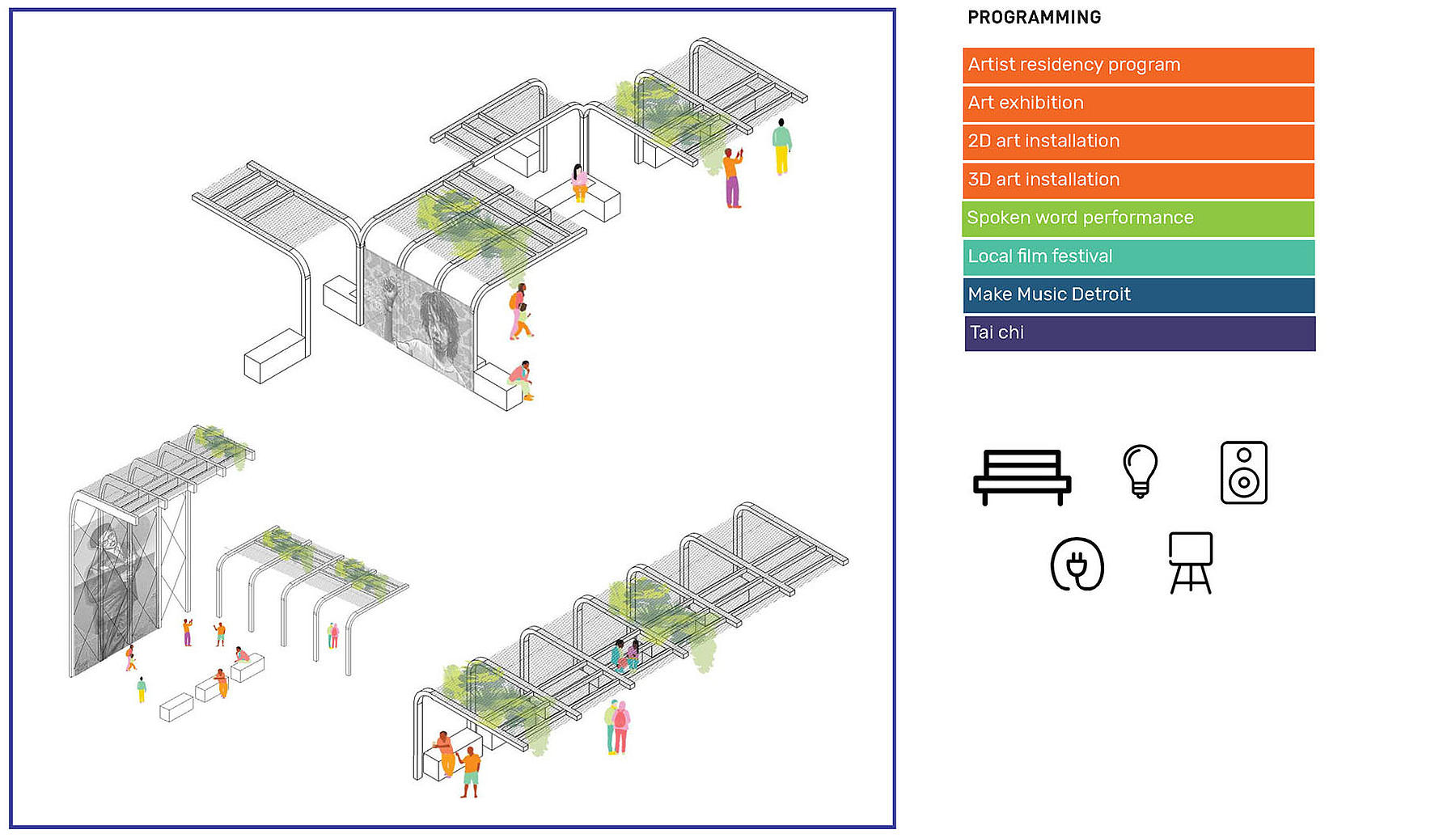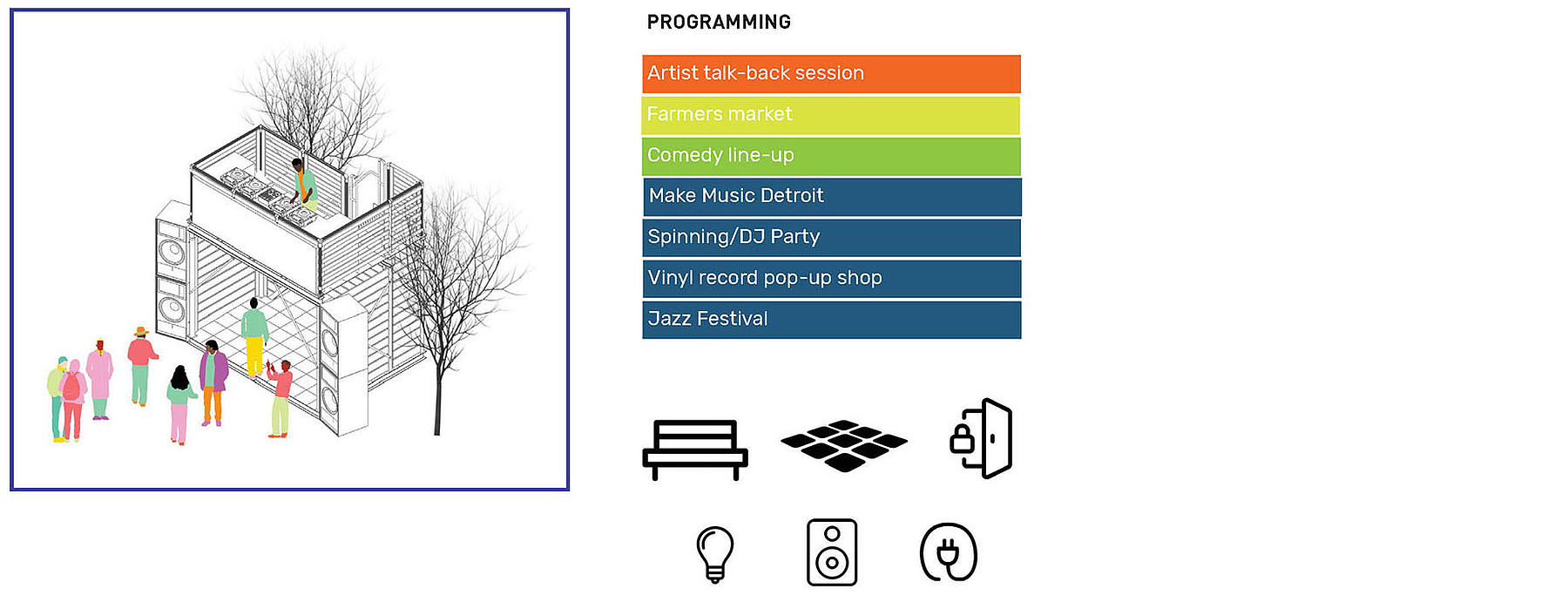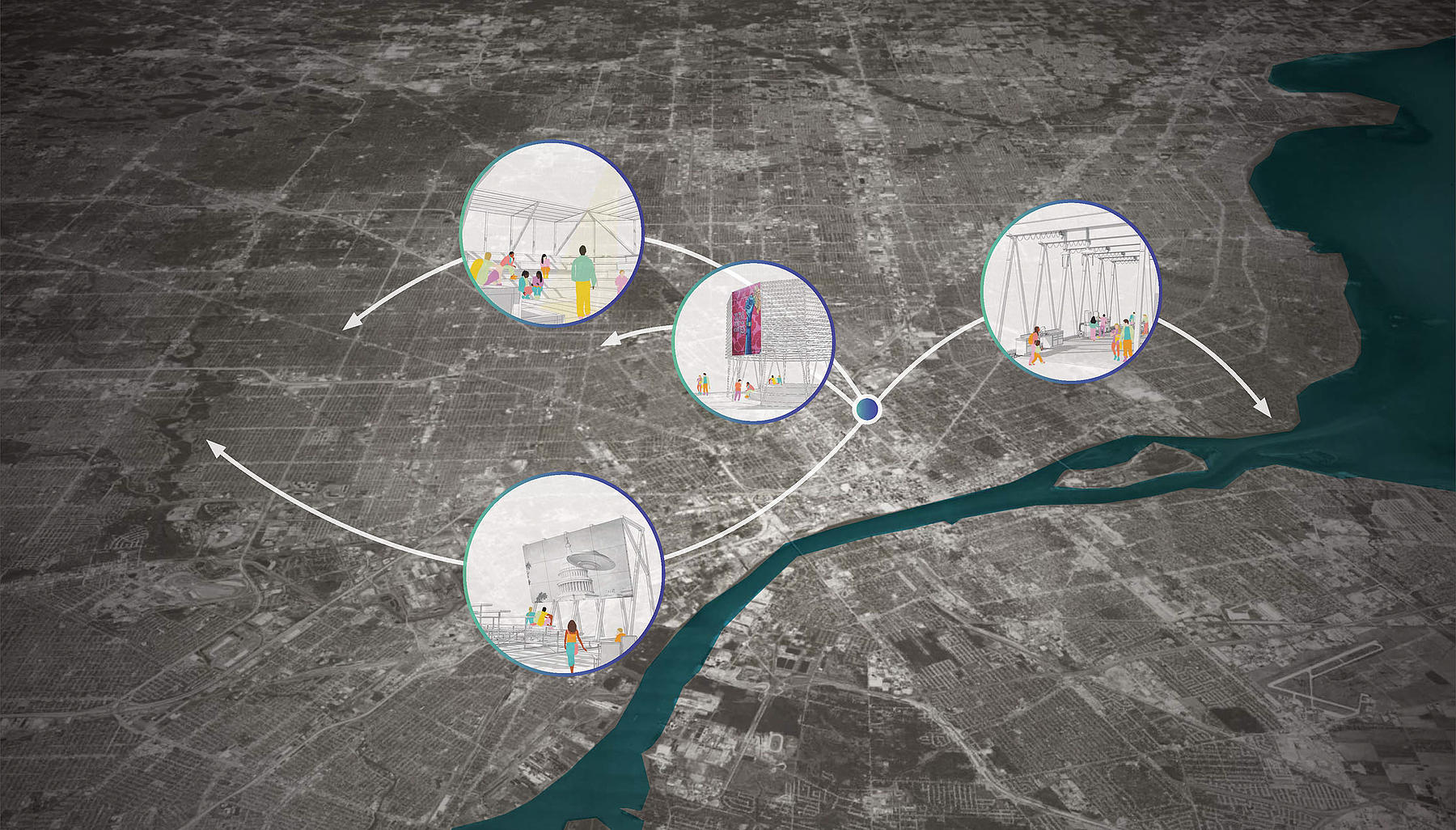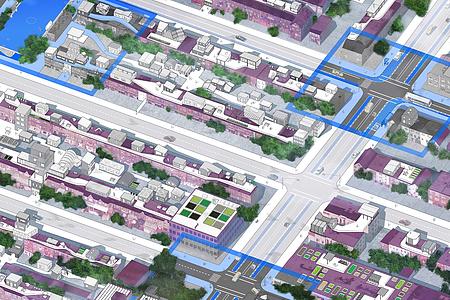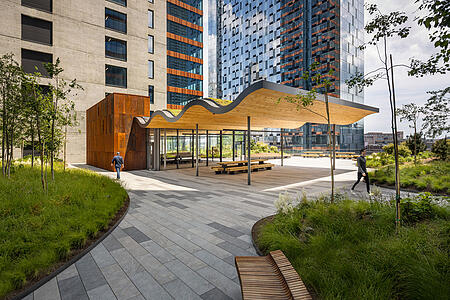DIA Plaza | Midtown Cultural Connections
A new urban framework to elevate Detroit’s cultural and social intelligence in the Midtown arts and cultural district.
This competition—called DIA Plaza | Midtown Cultural Connections—centers on a nine block district in the heart of Detroit. This District contains some of the city’s most notable institutions—Charles H. Wright Museum of African American History, College for Creative Studies, the Detroit Historical Museum, Detroit Public Library, the Michigan Science Center, University of Michigan, Wayne State University, among others—but little has been done to leverage or connect the public spaces surrounding each one. In fact, visitors have described the four-acre plaza outside the Detroit Institute of Art (DIA) as impermeable and set apart from the community. In response, civic and cultural leaders called for proposals to transform the district’s exterior spaces into a unified, vibrant public space for Detroiters and visitors alike.
Our team—a diverse group of designers, artists and urban innovators—set out to bring an unconventional, culturally-sensitive and highly-interactive approach to this complex site. A critical component to this process was the team’s makeup. In addition to SITU, the “ensemble” included SMM, a landscape architecture firm specializing in community design; BMike, a street artist, filmmaker and activist; Britney Stoney, a Detroit-based musician and playwright; and MIT Civic Data Design Lab, an organization that visualizes and analyzes civic data for cities around the world. Each team member developed a layer of interventions to reinvigorate the site—from programming to digital infrastructure to spatial design. These layers come together to form a compelling sense of place that not only mobilizes the resources of the surrounding institutions but also integrates cultural activity from across the city.
The site itself presents a number of challenges. The existing architecture is varied and at times, like in the case of the DIA itself, its Beaux-Arts design conveys a monumentality that is more intimidating than inviting. Though the district contains a concentration of cultural institutions, developing physical connections between them is another challenge. Wide roads and parking spaces create more of a campus feel, rather than welcoming foot traffic and laying the groundwork for an activated urban environment. The competition also asked teams to develop a plan for engaging community voices—including surrounding institutions and residents of the city.
Amongst our team, SITU was tasked with designing flexible infrastructure to support new and diverse programming throughout the cultural district. We began by taking a deep dive into the programming of surrounding institutions. How could these programs make their way outside the confines of individual buildings and begin to activate the district’s exterior spaces? And beyond supporting neighboring institutions within the district, we sought to understand how the plaza could support Detroit’s other creative projects, perhaps serving as a platform or a resource for local artists, young people or community organizations.
To answer these questions, we built a robust list of potential programs and analyzed their technical and functional requirements. An array of flexible interventions emerged from this process, geared for deployment across the district. Designed for a range of scales, these structures include community pavilions, makerspaces, art wall modules and several types of seating and kiosks. Dispersed across SMM’s landscape framework and activated by local artists, educational programs and community organizations, the outcome is a dynamic and inviting civic space. What was once the space-in-between transforms into a place—a platform for elevating, sharing and empowering Detroit’s communities.
Taking it one step further, our proposal concluded with the idea of distribution and exchange. How can the things created here—in this central arts and culture district—be dispersed across the city? Designed for mobility and adaptation, these interventions travel offsite, bringing resources, connectivity and cultural programming to neighborhoods across the city.
Client
Detroit Institute of Arts Museum; Midtown Detroit, Inc.
Location
Detroit, MI
Scope
Semi-finalist for master plan
Collaborators
Spackman Mossop Michaels; Civic Data Design Lab; Brandan “BMike” Odums; Britney Stoney
